Sustainable Tourism vs. Ecotourism: What's the Difference?
If you're starting to research more ways to become a more responsible traveler, you're bound to run across terms like "sustainable tourism,” "ecotourism," and "voluntourism,” sometimes even used interchangeably. But what do they all mean? In reality, ecotourism refers to the sector of low-impact tourism that includes natural areas, whereas sustainable tourism is a broader term describing sustainable practices within and performed by the tourism industry.
The environmental damages that can stem from irresponsible tourism have continued to come to light through complications from overtourism (when a destination or attraction suffers from overcrowding or an excess of tourists it isn’t designed to handle) and land degradation (when increased construction of tourism infrastructure negatively affects land resources and biodiversity). These terms are more than just travel industry buzzwords; sustainable travel is—hopefully—here to stay.

What Is Sustainable Tourism?
Sustainable tourism encompasses all forms of tourism that consider the long-term economic, social, and environmental impacts of tourism while addressing the needs of visitors, the environment, host communities, and the tourism industry itself. According to the Global Sustainable Tourism Council (GSTC)—an organization that sets global standards for sustainable travel and tourism—sustainable tourism doesn’t refer to a specific type of tourism but is rather an aspiration for the impacts of all forms of tourism.
Specifically, "sustainable tourism takes full account of its current and future economic, social and environmental impacts, addressing the needs of visitors, the industry, the environment, and host communities." This includes conservation efforts, preserving cultural heritage and traditional values, and providing equitably distributed socio-economic benefits.
Destinations and industries may practice sustainable tourism by prioritizing the natural environment when developing activities and infrastructure, respecting the cultural practices of host communities, and ensuring long-term economic operations to support the destination, to name a few.
Adopting a few sustainable practices into your travel routine isn’t just a win for the people, environments, and wildlife of your destination, it can often create more educational, meaningful, and authentic tourism experiences at the same time. Individual travelers can do things like buy locally made souvenirs, opt for public transportation instead of rental cars, buy an admission ticket to a protected conservation area (like a national park), or go low-impact camping to show their support for sustainable tourism.
What Is Ecotourism?
Sustainable tourism as a whole considers the economic, social, and environmental impacts of the travel industry, ecotourism tends to lean deeper into the environmental. The most cited definition of ecological tourism (or “ecotourism”) comes straight from the International Ecotourism Society (TIES), a nonprofit organization that’s been dedicated to promoting ecotourism since 1990. TIES defines ecotourism as “responsible travel to natural areas that conserves the environment, sustains the well-being of the local people, and involves interpretation and education.”
According to the United Nations World Tourism Organization (UNWTO), ecotourism refers to nature-based forms of tourism where the observation and appreciation of nature and traditional culture in natural areas is the main motivation behind traveling. Specifically, ecotourism has the following characteristics:
- Contains educational and interpretation features.
- Generally speaking, tours are organized by specialized, small-group tour operators.
- Destination partners are usually small, locally-owned businesses.
- Minimizes negative impacts on the natural and cultural environment.
- Supports the maintenance of areas used as ecotourism attractions.
This maintenance support is provided by the generation of income for communities, local organizations, and conservation management authorities as well as the availability of alternative employment opportunities and increased awareness of natural and culturally significant areas.
While ecotourism is just one of several different subsets of sustainable tourism, it tends to be the most widely recognized. Since it focuses primarily on experiencing and learning about nature, ecotourism should be managed in such a way that helps contribute to the conservation and preservation of those very areas. It goes farther than wildlife, and focuses on both environmental and cultural understanding of the natural places visited. For this reason, there are some communities and even entire habitats that completely rely on ecotourism as a means for survival.
For example, Palau in the South Pacific requires all visitors to sign an eco pledge before entering the country saying that they will act in a way that is both ecologically and culturally responsible for the sake of future generations of Palauans. Tourists can also look out for Palau Pledge Certified businesses to support companies that have made a commitment to sustainability. In Africa, many governments have safeguarded national parks and natural reserves that generate revenue for the local communities while keeping some of the world’s most iconic wildlife and ecosystems protected from extinction. In turn, nature-based tourism creates countless jobs and contributes funds to help manage these protected areas.
Other Types of Sustainable Tourism
Although ecotourism is a popular niche segment of sustainable tourism in natural areas, it's not the only one. Other forms of sustainable tourism highlight different priorities such as volunteer work, small businesses, and unique local experiences.
Voluntourism
Voluntourism involves tourists who travel for the specific purpose of volunteering, such as teaching English in a foreign country, working with a wildlife rescue center, or offering medical services to underdeveloped areas. Voluntourists can travel internationally or domestically, typically for a charity or non profit, participating in voluntourism programs that positively impact local communities and benefits destinations long-term.
Soft Tourism
Soft tourism (as opposed to hard tourism) is characterized by small-scale, locally owned and operated businesses that employ local community members, respect the local way of life and local traditions, and allow tourists to experience the truly unique aspects of a destination.
Hard tourism conversely focuses on large-scale mass tourism development, which often leads to negative impacts on the environment or keeps money out of the local economies. Soft tourism typically values experiences over checking off the most popular tourist attractions, taking a class over traveling without gaining any in-depth knowledge about the destination, and spending more time in one spot over hitting a new city every couple of days.
Community Tourism
Community-based tourism puts a region's tourism industry into the hands of its local residents, and it is often sponsored by its governments or non profits with expertise in tourism development. Community members will manage homestays where tourists can get an authentic experience of local culture, become tour guides, or provide other tourism services themselves rather than sourcing out to multinational or commercialized companies. This type of tourism is important because economic benefits usually go straight towards local families and stay within the community.
Global Sustainable Tourism Council. " GSTC Sustainable Tourism Glossary: Definitions of Important Terms ." 2021.
The International Ecotourism Society. " What Is Ecotourism ." 2019.
Is Thailand Ready to Reopen Its Borders to Tourists?
Regenerative Travel Brings Hotels Together for Environmental and Social Impact
Destinations Dependent on Ecotourism Are Facing a Silent Crisis
How Tourism Boards in Southeast Asia Have Been Turning to Sustainable Travel
The Ongoing Debate of “Last Chance Tourism”
How to Choose an Ethical Wildlife Experience
How to Travel Sustainably on a Budget
Responsible Travel in Africa: The Complete Guide
What Is Overtourism—And Why We Should Be Talking About It
How to Find an Ethical, Authentic Food Tour
The 14 Best Backpack Brands of 2024
The Rise of Wellness Tourism
The 8 Best Luggage Sets of 2024, Tested and Reviewed
Slum Tourism: What Is It, and Is It Okay?
Top Caribbean Ecotourism Destinations
Bike Travel Is Surging Around the World. Will It Last?

Journey With Purpose

Genuine Differences Between Ecotourism, Sustainable Tourism, and Nature Tourism that you need to Know
- June 29, 2023
Table of Contents

I. Introduction
Understanding the distinctions between ecotourism, sustainable tourism , and nature tourism is crucial in today’s world where sustainable and responsible travel practices are gaining increasing importance. However, these terms are often used interchangeably, leading to misconceptions and confusion.
The importance of understanding the differences lies in the fact that each of these forms of tourism has unique objectives and focuses on different aspects of travel.
By comprehending these distinctions, you can align your travel preferences and goals with the appropriate form of tourism, contributing to the preservation of the environment, supporting local communities, and promoting sustainability.
What is the confusion:
Misconceptions and confusion arise due to the overlapping nature of ecotourism , sustainable tourism, and nature tourism and the widespread presence of “greenwashing” in the core tourism industry.
Greenwashing refers to the practice of misleadingly promoting a product, service, or business as environmentally friendly or sustainable when it may not be the case.
Such practices further contribute to the intermingling of these terms and create ambiguity. This article will define and explain ecotourism, sustainable tourism, and nature tourism individually, highlighting their key principles, objectives, and areas of focus.
By exploring the distinctions between ecotourism, sustainable tourism, and nature tourism, you can make informed choices that align with your values, minimize your environmental impact, and contribute positively to local communities and cultures.
Let’s dive into each concept to clear up its unique characteristics and benefits.
II. Ecotourism
A. definition and principles of ecotourism:.
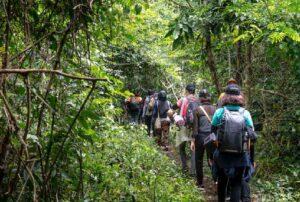
The Cambridge English Dictionary defines ecotourism as “the business of organizing holidays to places of natural beauty in a way that benefits local people and doesn’t damage the environment.”
Ecotourism is described by the International Ecotourism Society (TIES) as “responsible travel to the natural environment that protects the environment, maintains the lives of locals, and educates travelers about nature.”
B. Three pillars of ecotourism:
1. Conservation of nature:
Ecotourism aims to promote the conservation of nature and biodiversity. It involves visiting natural reserves, protected areas, and other natural landscapes while minimizing negative impacts on the environment.
2. Generating financial benefits for local communities:

Ecotourism seeks to benefit local communities by supporting their economic development.
This can be achieved by the following:
involving local people in the tourism industry,
providing employment opportunities,
encouraging the consumption of locally-made products and services.
3. Providing a learning experience for travelers:

Ecotourism emphasizes educating and raising awareness among travelers about the natural environment, local cultures, and sustainability.
It gives opportunities for visitors to learn about the importance of conservation efforts and the essence of preserving natural resources.
Overall, ecotourism focuses on the ecological aspects of tourism, promoting environmental education, and contributing to the well-being of local communities.
C. Benefits and impact of ecotourism:
Ecotourism offers various benefits and has a positive impact on hosts, visitors, and the local community. Here are some key points regarding the benefits and impact of ecotourism:
1. Positive experiences for hosts and visitors:
Ecotourism aims to provide positive and meaningful experiences for both the hosts (local communities and nature) and the visitors.
It offers opportunities for cultural exchange, learning about local traditions and customs, and engaging with the natural environment.
2. Leaving destinations in a better condition:

One of the fundamental principles of ecotourism is to leave a destination in a good or better condition than it was found.
Ecotourism promotes responsible travel practices that minimize negative environmental impacts.
Minimizing negative This includes respecting wildlife and ecosystems, minimizing waste and pollution, and conserving natural resources.
By adopting sustainable behaviors, ecotourists contribute to the preservation and protection of the visited destinations.
3. Contribution to local community development and sustainability:

Ecotourism emphasizes the importance of benefiting local communities and supporting their sustainable development.
It provides economic opportunities for local residents by promoting community-based tourism initiatives.
By engaging in ecotourism, visitors often contribute directly to the local economy.
This is possible through the purchase of locally made handicrafts, use of local services, or staying at community-owned accommodations or homestays with locals.
This helps generate income, employment, and investments at the local level, contributing to the long-term sustainability of the community.
Thus, ecotourism offers positive experiences for both hosts and visitors, encourages responsible travel practices to preserve destinations, and contributes to the development and sustainability of local communities.
III. Sustainable Tourism
A. definition and principles of sustainable tourism:.
1. Definition:
Sustainable tourism, as defined by the U.N. World Tourism Organization (UNWTO), takes full account of its current and future economic, social, and environmental impacts, addressing the needs of visitors, the industry, the environment, and host communities.
2. The principles of sustainable tourism:
These are based on the concept of sustainability, which means being able to sustain an activity or maintain it at the same level over time.
These principles guide the development and implementation of sustainable tourism practices. According to UNWTO, there are five pillars of sustainable tourism:
B. Five pillars of sustainable tourism according to UNWTO:
1. Tourism policy and governance:
This pillar focuses on establishing effective policies and governance structures at various levels to promote sustainable tourism practices. It involves creating regulations, frameworks, and strategies that support sustainable tourism development.
2. Trade/investment/data and competitiveness:
This pillar emphasizes the importance of sustainable trade and investment practices in the tourism industry.
It includes promoting fair and responsible tourism business practices, encouraging investments that align with sustainability goals, and utilizing data and research to make informed decisions.
3. Employment / decent work and capacity building:

Sustainable tourism aims to create employment opportunities and foster decent work conditions for local communities.
It emphasizes the development of human resources, capacity building, and training programs
This enhances the skills and livelihoods of those working in the tourism sector.
4. Poverty reduction and social inclusion:
Sustainable tourism seeks to contribute to poverty reduction and social inclusion.
It focuses on ensuring that tourism benefits all members of society, including marginalized communities and vulnerable groups.
This pillar involves promoting the equitable distribution of tourism benefits and enhancing social well-being.
5. Sustainability of the natural and cultural environment:

This pillar highlights the importance of preserving and conserving natural and cultural heritage in tourism destinations.
It involves sustainable management of resources, protection of ecosystems, promotion of biodiversity, and preservation of cultural traditions and heritage sites.
These five pillars provide a comprehensive framework for sustainable tourism development.
C. Focus and activities of sustainable tourism:
The activities associated with sustainable tourism aim to achieve reducing the environmental impact of tourism and support local employment and cultural conservation and encourage authentic tourism experiences and conserve heritage.
Here are some examples of the focus and activities in sustainable tourism:
1. Reducing the environmental impact of tourism:

Sustainable tourism strives to minimize the negative effects of tourism on the environment. This can be achieved through various measures such as:
Implementing sustainable practices in accommodation, transportation, and tour operations to reduce energy consumption, waste generation, and carbon emissions.
Promoting responsible use of natural resources, such as water and energy conservation, and promoting recycling and waste management.
Protecting and preserving sensitive ecosystems and biodiversity by promoting responsible behavior among tourists, such as respecting wildlife and natural habitats.

2. Supporting local employment and cultural conservation:
Sustainable tourism recognizes the importance of supporting local communities and preserving their cultural heritage.
3. Some activities in this regard include:
Encouraging tourists to engage with local communities, learn about their traditions, and support local artisans and businesses.
Providing economic opportunities for local residents through tourism-related jobs, such as local guides, craft producers, and service providers.
Supporting cultural conservation efforts, such as the preservation of historical sites, traditions, and indigenous knowledge.
4. Encouraging authentic tourism experiences and heritage conservation:
Sustainable tourism promotes meaningful and authentic experiences for tourists while safeguarding cultural and natural heritage.
This involves:
Encouraging tourists to engage in respectful and immersive experiences that foster a deeper understanding of local cultures, traditions, and ways of life.
Promoting the preservation of historical sites, landmarks, and cultural traditions by raising awareness among tourists and implementing conservation measures.
Collaborating with local communities to develop sustainable tourism activities that showcase the unique cultural and natural heritage of a destination.
D. Benefits and impact of sustainable tourism:
1. Sustainable tourism
This encompasses various benefits and impacts that contribute to the long-term viability of tourism activities while empowering local communities and preserving natural and cultural assets for future generations.
Here are the key points regarding the benefits and impact of sustainable tourism:
2. Ensuring long-term viability of tourism activities:
Sustainable tourism aims to promote tourism practices that can be sustained over time without depleting resources or causing harm to the environment.
By adopting sustainable practices, tourism activities can continue to thrive while minimizing negative impacts on ecosystems, natural resources, and local communities.
3. Empowering local communities and promoting economic growth:

Sustainable tourism emphasizes the involvement and empowerment of local communities.
It strives to generate economic benefits that directly support local livelihoods, improve socio-economic conditions, and foster community development.
This can be achieved through initiatives such as community-based tourism, where local residents actively participate in and benefit from tourism activities.
4. Preserving natural and cultural assets for future generations:
Sustainable tourism recognizes the importance of preserving natural and cultural heritage for future generations.
It promotes the conservation and protection of ecosystems, biodiversity, historical sites, and cultural traditions.
By valuing and preserving these assets, sustainable tourism aims to maintain their integrity and ensure they can be enjoyed by both present and future generations.
IV. Nature Tourism
A. definition and characteristics of nature tourism.
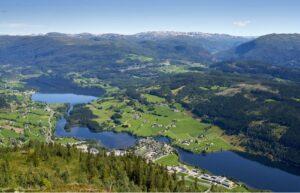
1. Nature tourism, as defined by Ecotourism Australia, is a form of leisure travel that is primarily focused on enjoying natural attractions and engaging in various nature-based activities.
It involves visiting and experiencing the beauty of natural environments.
2. Some characteristics of nature tourism:
Leisure travel focused on natural attractions:
Nature tourism involves traveling to destinations that offer natural beauty, such as national parks, nature reserves, and other areas known for their scenic landscapes and wildlife.
B. Engagement in nature-based activities:
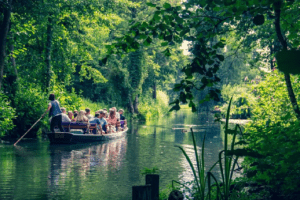
Nature tourism offers opportunities to participate in activities that allow individuals to immerse themselves in nature.
Examples of nature tourism activities include
1. trekking or hiking in nature parks and preserves,
2. bird watching to observe different bird species in their natural habitats,
3. and stargazing to enjoy the night sky and celestial phenomena.
Nature tourism is often driven by a desire to connect with nature and appreciate its wonders.
It provides a chance to experience the tranquility, biodiversity, and unique ecosystems that exist in natural environments.
However, it is important to note that nature tourism may not necessarily encompass the same level of environmental conservation and community involvement as ecotourism or sustainable tourism.
C. Focus and activities of nature tourism:
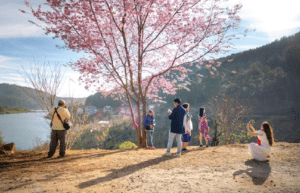
In nature tourism, the focus is on promoting nature-based experiences and recreation.
It involves activities that allow individuals to connect with the natural environment and appreciate its wonders.
Some key aspects of nature tourism include:
1. Promoting nature-based experiences:
Nature tourism aims to highlight and promote activities that allow individuals to engage with and enjoy the natural environment. This can include activities such as hiking, trekking, camping, wildlife observation, nature photography, and exploring natural landscapes.
2. Recreation in nature:
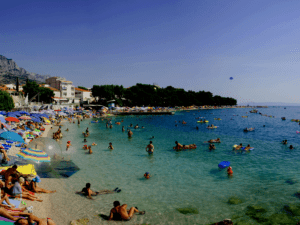
Nature tourism often emphasizes recreational activities that take place in natural settings.
This can involve various outdoor pursuits like bird watching, stargazing, fishing, kayaking, canoeing, or simply immersing oneself in the serenity of natural surroundings.
3. Connecting with the natural environment:
Nature tourism provides opportunities for individuals to establish a connection with the natural world. It allows people to appreciate the beauty, tranquility, and biodiversity of natural attractions.
By engaging in nature-based activities, tourists can develop a deeper understanding and appreciation for the environment.
The primary objective of nature tourism is to provide enjoyable and fulfilling experiences in natural settings.
It allows individuals to escape the urban environment and immerse themselves in the beauty and serenity of nature.
However, it’s important to note that nature tourism may not necessarily encompass the same level of environmental conservation and community involvement as ecotourism or sustainable tourism.
D. Differentiation between nature tourism and ecotourism and sustainable tourism:
In comparison to ecotourism and sustainable tourism, nature tourism has some distinct differences in terms of its focus and scope:
1. Limited focus on preservation and local benefits:
Nature tourism
This primarily concentrates on providing nature-based experiences and activities. While it promotes the enjoyment of natural attractions, it may not have the same level of emphasis on conservation and environmental preservation as ecotourism.
Similarly, nature tourism might not prioritize generating direct benefits for local communities to the same extent as sustainable tourism.
2. Exclusion of broader sustainability aspects:
Nature tourism is often centered around recreational activities and connecting with the natural environment.
It may not encompass the broader sustainability aspects that are integral to both ecotourism and sustainable tourism.
This includes considerations such as reducing the environmental impact of tourism, addressing social and economic needs, and preserving local cultures and heritage.
While nature tourism offers opportunities for individuals to appreciate and engage with nature, it may not necessarily align with the broader goals of sustainability and holistic impact that are central to ecotourism and sustainable tourism.
It’s important to note that these distinctions are not meant to diminish the value or enjoyment of nature tourism.
Instead, they highlight the specific characteristics and objectives of each type of tourism, allowing travelers to make informed choices based on their preferences and the desired impact of their tourism activities.
V. Recommendations and Conclusion
A. choosing impactful tourism options:.
When it comes to choosing impactful tourism options, it is recommended to emphasize ecotourism and sustainable tourism for a meaningful impact. These forms of tourism prioritize the well-being of local communities and the environment.
By engaging in ecotourism , which focuses on nature conservation, local culture, and benefiting the community, you can contribute to the preservation of natural resources and support the livelihoods of local people.
Sustainable tourism , on the other hand, aims to reduce the negative impacts of tourism while considering the economic, social, and environmental aspects.
It involves gaining authentic experiences, conserving local heritage and culture, and contributing to the sustainability of communities.
By selecting options that fall under the categories of ecotourism and sustainable tourism, you can ensure that your tourism choices have a positive impact.
These forms of tourism align with the principles of responsible travel, promoting the welfare of local communities and the preservation of natural and cultural assets for future generations.
Keep in mind that nature tourism , while enjoyable for spending time in nature, may not necessarily include preservation or locally beneficial activities.
B. Encouraging responsible and conscious tourism choices:
1. In order to encourage responsible and conscious tourism choices:
It is important to support initiatives that align with the principles of ecotourism and sustainable tourism.
Look for tour operators, accommodations, and activities that prioritize environmental conservation, support local communities, and promote sustainable practices.
This can include choosing eco-friendly accommodations, participating in community-based tourism projects, and opting for tours and activities that minimize negative impacts on the environment.
2. Additionally, being mindful of the positive influence travelers can have on destinations is crucial.
Respect the local culture, traditions, and way of life when visiting a place. Be conscious of your actions and their potential impact on the environment and the local community.
Minimize waste, conserve resources, and engage in responsible behavior during your travels. Support local businesses, artisans, and farmers by purchasing locally made products and supporting fair trade practices.
By making responsible and conscious tourism choices, you can contribute to the preservation of natural and cultural heritage, support local economies, and foster a positive relationship between travelers and the destinations they visit.
Remember that your actions as a traveler can have a lasting impact, so strive to leave a positive footprint wherever you go.
C. Recap of key points and summary of the distinctions:
1. Recapitulating the characteristics of ecotourism, sustainable tourism, and nature tourism:
Ecotourism:
Focuses on organizing holidays to places of natural beauty in a way that helps local people and does not damage the environment.
Involves the conservation of nature, generating financial benefits for the local community, and offering a learning experience for visitors.
Emphasizes the ecology aspect of tourism, education, and contributing to the local community.
Sustainable Tourism:
Takes full account of current and future economic, social, and environmental impacts, addressing the needs of visitors, the industry, the environment, and host communities.
Centers around sustainability, aiming to sustain activities at the same level.
Includes pillars such as tourism policy and governance, trade/investment/data and competitiveness, employment/decent work and capacity building, poverty reduction and social inclusion, and the sustainability of the natural and cultural environment.
Focuses on reducing the impact of tourism, providing employment opportunities for locals, and conserving cultures.
Nature Tourism

Kayaking activity tourists love in nature tourism
Involves leisure travel undertaken primarily for the purpose of enjoying natural attractions and engaging in nature-based activities.
Focuses on nature and activities in nature, often including recreational programs like trekking, bird watching, and stargazing.
2. Reinforcing the need for transformation towards more earth-friendly and community-focused forms of tourism:
Both ecotourism and sustainable tourism share a focus on the environment and nature, and promoting tourism that benefits local communities. This highlights the urgency for traditional tourism to transition into more earth-friendly and community-focused forms of tourism.
By embracing ecotourism and sustainable tourism principles, such as conserving nature, supporting local communities, and reducing the negative impact of tourism, we can contribute to a more sustainable and responsible tourism industry.
While nature tourism can be enjoyable for a day spent in nature, it may not necessarily include preservation or locally beneficial activities, making it a less impactful option.
In a nutshell, it is recommended to prioritize options that fall under the categories of ecotourism and sustainable tourism if you want your tourism choices to have a positive impact.
By making conscious choices and supporting earth-friendly and community-focused tourism, we can contribute to the preservation of natural and cultural heritage, promote sustainability, and create positive experiences for both travelers and local communities.
D. Final thoughts on the importance of informed decision-making in tourism:
1. What is required:
Overall, it is crucial to promote awareness and understanding of ecotourism, sustainable tourism, and nature tourism to make informed decisions in the domain of tourism.
Many people tend to use these terms interchangeably, which leads to confusion and hinders the progress toward sustainable practices in the tourism industry.
By clearly defining and differentiating these terms, we can empower travelers to become knowledgeable tourists who actively research and choose tourism options that have a positive impact.
Ecotourism focuses on organizing holidays to places of natural beauty in a way that helps local people and does not harm the environment.
It is centered around three pillars: the conservation of nature, generating financial benefits for the local community, and providing educational experiences for visitors.
Ecotourism places a strong emphasis on ecology, education, and contributing to the local community.
Sustainable tourism , on the other hand, takes into account the current and future economic, social, and environmental impacts of tourism.
It addresses the needs of visitors, the industry, the environment, and host communities.
The five pillars of sustainable tourism include
Tourism policy and governance,
Trade/investment/data and competitiveness,
Employment/decent work and capacity building,
Poverty reduction and social inclusion,
The sustainability of the natural and cultural environment.
Sustainable tourism aims to reduce the negative impact of tourism, promote employment for locals, and conserve cultures.
Nature tourism is primarily focused on leisure travel undertaken for the purpose of enjoying natural attractions and engaging in nature-based activities.
It revolves around experiencing and appreciating nature, often including recreational programs such as trekking, bird watching, and stargazing.
2. Ecotourism and Sustainable Tourism:
While there are common points between ecotourism and sustainable tourism, both have a focus on the environment, nature, and the welfare of local communities.
There are distinct differences that set them apart.
Ecotourism is more focused on nature conservation, the environment, and the local culture, with the aim of benefiting the local community.
Sustainable tourism, on the other hand, has a broader scope and can be applied to various forms of tourism. It encompasses sustainability, reducing the impact of tourism, cultural conservation, and making tourism activities sustainable in the long term.
Nature tourism can be enjoyable but may not necessarily include preservation or locally beneficial activities, making it less impactful as a tourism option.
Considering various points regarding ecotourism, sustainable tourism, and nature tourism mentioned in this article, travelers can plan their trips based on their intentions of travel.
It is crucial to consider the environmental, social, and economic impacts of tourism and strive to support tourism practices that prioritize the well-being of local communities and the conservation of natural and cultural heritage.
Through informed decision-making , tourists can play an active role in creating a more sustainable and responsible tourism industry.
Sunil Kirloskar
Hi, I am Dr. Sunil. My present blog travelsavvyHQ.com mainly focuses on various aspects of travel and tourism and also holds the the cord of environment protection at its core. The blog consists of subtopics like ecotourism, solo travel, sustainable travel and so many. The articles on fundamentals of environmental will surely help the travelers.
[…] on the environment, such as carbon emissions, habitat destruction, and pollution. By adopting ecotourism practices, travelers can minimize their impact and contribute to the conservation of ecosystems and […]
[…] implementation of regulations in ecotourism can undermine its core principles and lead to negative impacts on the environment and local […]
[…] Ecotourism often involves partnerships with local communities, providing economic benefits and empowering them to take an active role in conservation efforts. Local people are frequently involved in guiding, hosting, and managing eco-lodges. […]
[…] is crucial to provide top priority to sustainable tourism initiatives that concentrate on preservation and reduce harmful environmental […]
Leave a Reply Cancel Reply
Your email address will not be published. Required fields are marked *
Name *
Email *
Add Comment *
Save my name, email, and website in this browser for the next time I comment.
I accept the Privacy Policy
Post Comment
Trending now


What Is the Difference Between Nature-Based Tourism and Ecotourism?
By Michael Ferguson
Nature-based tourism and ecotourism are two terms that are often used interchangeably, but they actually have distinct differences. Both offer unique opportunities for travelers to experience the natural world, but their approaches and goals differ. In this article, we’ll explore the differences between nature-based tourism and ecotourism.
What is Nature-Based Tourism?
Nature-based tourism refers to any form of tourism that involves visiting natural areas, such as forests, mountains, beaches, and wildlife reserves. The focus of nature-based tourism is on experiencing and appreciating the natural world. This type of tourism can include a wide range of activities such as hiking, camping, bird-watching, kayaking and more.
Nature-based tourism is not necessarily focused on conservation or sustainability. While visitors may learn about the local environment during their visit, the primary goal is usually to enjoy recreational activities in a natural setting.
Examples of Nature-Based Tourism:
- Visiting a national park to hike or camp
- Taking a scenic drive through a wilderness area
- Going on a whale watching tour
- Participating in adventure sports like rock climbing or rafting
What is Ecotourism?
Ecotourism also involves visiting natural areas but has a stronger focus on conservation and sustainability. The goal of ecotourism is to promote responsible travel to natural areas that conserves the environment and improves the welfare of local people.
Ecotourism aims to minimize negative impacts on the environment while providing opportunities for visitors to learn about conservation efforts and participate in sustainable practices. Ecotourism often involves small-scale operations that work closely with local communities to ensure that economic benefits are shared fairly.
Examples of Ecotourism:
- Visiting an eco-lodge that uses sustainable practices such as solar power and composting toilets
- Taking a guided nature walk with a local expert who explains the ecology of the area and conservation efforts
- Participating in a community-based tourism program that provides economic benefits to local people while conserving the environment
- Volunteering with a conservation organization to help protect endangered species or restore habitats
The Key Differences Between Nature-Based Tourism and Ecotourism:
While both nature-based tourism and ecotourism involve visiting natural areas, their approaches and goals are different. Here are some key differences:
- Nature-based tourism is primarily focused on recreational activities, while ecotourism is focused on conservation and sustainability.
- Nature-based tourism does not necessarily prioritize environmental protection or benefit local communities, while ecotourism does.
- Ecotourism often involves small-scale operations that work closely with local communities, while nature-based tourism can involve larger-scale operations that may have less interaction with local people.
Conclusion:
10 related question answers found, what is the difference between nature tourism and ecotourism, what is the difference between ecotourism and nature tourism, what is the difference between ecotourism and community based tourism, what is the difference between sustainable tourism and ecotourism, what is the difference between natural tourism and ecotourism, what is the difference between ecotourism and green tourism, what is the difference between tourism and ecotourism, what type of tourism is associated with nature-based tourism, what is the difference between ecotourism and tourism, how is ecotourism different from tourism, backpacking - budget travel - business travel - cruise ship - vacation - tourism - resort - cruise - road trip - destination wedding - tourist destination - best places, london - madrid - paris - prague - dubai - barcelona - rome.
© 2024 LuxuryTraveldiva
What Is Ecotourism? Definition, Examples, and Pros and Cons
- Chapman University
- Sustainable Fashion
- Art & Media
Ecotourism Definition and Principles
Pros and cons.
- Examples of Ecotourism
- Frequently Asked Questions
Ecotourism is about more than simply visiting natural attractions or natural places; it’s about doing so in a responsible and sustainable manner. The term itself refers to traveling to natural areas with a focus on environmental conservation. The goal is to educate tourists about conservation efforts while offering them the chance to explore nature.
Ecotourism has benefited destinations like Madagascar, Ecuador, Kenya, and Costa Rica, and has helped provide economic growth in some of the world’s most impoverished communities. The global ecotourism market produced $92.2 billion in 2019 and is forecasted to generate $103.8 billion by 2027.
A conservationist by the name of Hector Ceballos-Lascurain is often credited with the first definition of ecotourism in 1987, that is, “tourism that consists in travelling to relatively undisturbed or uncontaminated natural areas with the specific object of studying, admiring and enjoying the scenery and its wild plants and animals, as well as any existing cultural manifestations (both past and present) found in these areas.”
The International Ecotourism Society (TIES), a non-profit organization dedicated to the development of ecotourism since 1990, defines ecotourism as “responsible travel to natural areas that conserves the environment, sustains the well-being of the local people, and involves interpretation and education [both in its staff and its guests].”
The International Union for Conservation of Nature (IUCN) looks at ecotourism as a significant tool for conservation, though it shouldn’t be seen as a fix-all when it comes to conservation challenges:
“There may be some areas that are just not appropriate for ecotourism development and some businesses that just won’t work in the larger tourism market. That is why it is so important to understand the basics of developing and running a successful business, to ensure that your business idea is viable and will be profitable, allowing it to most effectively benefit the surrounding environment and communities.”
Marketing an ecosystem, species, or landscape towards ecotourists helps create value, and that value can help raise funds to protect and conserve those natural resources.
Sustainable ecotourism should be guided by three core principles: conservation, communities, and education.
Conservation
Conservation is arguably the most important component of ecotourism because it should offer long-term, sustainable solutions to enhancing and protecting biodiversity and nature. This is typically achieved through economic incentives paid by tourists seeking a nature-based experience, but can also come from the tourism organizations themselves, research, or direct environmental conservation efforts.
Communities
Ecotourism should increase employment opportunities and empower local communities, helping in the fight against global social issues like poverty and achieving sustainable development.
Interpretation
One of the most overlooked aspects of ecotourism is the education component. Yes, we all want to see these beautiful, natural places, but it also pays to learn about them. Increasing awareness about environmental issues and promoting a greater understanding and appreciation for nature is arguably just as important as conservation.
As one of the fastest growing sectors of the tourism industry, there are bound to be some downsides to ecotourism. Whenever humans interact with animals or even with the environment, it risks the chance of human-wildlife conflict or other negative effects; if done so with respect and responsibility in mind, however, ecotourism can reap enormous benefits to protected areas.
As an industry that relies heavily on the presentation of eco-friendly components to attract customers, ecotourism has the inevitable potential as a vessel for greenwashing. Part of planning a trip rooted in ecotourism is doing research to ensure that an organization is truly providing substantial benefits to the environment rather than exploiting it.
Ecotourism Can Provide Sustainable Income for Local Communities
Sustainably managed ecotourism can support poverty alleviation by providing employment for local communities, which can offer them alternative means of livelihood outside of unsustainable ones (such as poaching).
Research published in Proceedings of the National Academy of Sciences found that communities in regions surrounding conservation areas in Costa Rica had poverty rates that were 16% lower than in areas that weren’t near protected parks. These protected areas didn’t just benefit from conservation funds due to ecotourism, but also helped to reduce poverty as well.
It Protects Natural Ecosystems
Ecotourism offers unique travel experiences focusing on nature and education, with an emphasis on sustainability and highlighting threatened or endangered species. It combines conservation with local communities and sustainable travel , highlighting principles (and operations) that minimize negative impacts and expose visitors to unique ecosystems and natural areas. When managed correctly, ecotourism can benefit both the traveler and the environment, since the money that goes into ecotourism often goes directly towards protecting the natural areas they visit.
Each year, researchers release findings on how tourist presence affects wildlife, sometimes with varying results. A study measuring levels of the stress hormone cortisol in wild habituated Malaysian orangutans found that the animals were not chronically stressed by the presence of ecotourists. The orangutans lived in the Lower Kinabatangan Wildlife Sanctuary, where a local community-managed organization operates while maintaining strict guidelines to protect them.
Ecotourism May Also Hurt Those Same Natural Ecosystems
Somewhat ironically, sometimes ecotourism can hurt ecosystems just as much as it can help. Another study in the journal Trends in Ecology and Evolution found that ecotourism can alter animal behaviors in ways that put them at risk. If the presence of humans changes the way animals behave, those changes may make them more vulnerable by influencing their reaction to predators or poachers.
It's not just the animals who are at risk. As ecotourism activities become too popular, it can lead to the construction of new infrastructure to accommodate more visitors. Similarly, more crowds mean more pressure on local resources, increased pollution, and a higher chance of damaging the soil and plant quality through erosion. On the social side, these activities may displace Indigenous groups or local communities from their native lands, preventing them from benefiting from the economic opportunities of tourism.
Ecotourism Offers the Opportunity to Experience Nature
Renown conservationist Jane Goodall has a famous quote: “Only if we understand, will we care. Only if we care, will we help. Only if we help, shall all be saved.” It can be difficult to understand something that we haven’t seen with our own eyes, and ecotourism gives travelers the opportunity to gain new experiences in natural areas while learning about the issues they face.
Ecotourism also educates children about nature, potentially creating new generations of nature lovers that could someday become conservationists themselves. Even adult visitors may learn new ways to improve their ecological footprints .
EXAMPLES OF ECOTOURISM
The East African country has some competitive advantages over its neighbors thanks to its rich natural resources, paired with the fact that it has allocated over 25% of its total area to wildlife national parks and protected areas. Because of this, an estimated 90% of tourists visit to Tanzania seeking out ecotourism activities. Ecotourism, in turn, supports 400,000 jobs and accounts for 17.2% of the national GDP, earning about $1 billion each year as its leading economic sector.
Some of Tanzania’s biggest highlights include the Serengeti, Mount Kilimanjaro , and Zanzibar, though the country still often goes overlooked by American tourists. Visitors can take a walking safari tour in the famous Ngorongoro Conservation area, for example, with fees going to support the local Maasai community.
The country is also known for its chimpanzees , and there are several ecotourism opportunities in Gombe National Park that go directly towards protecting chimpanzee habitats.
Galapagos Islands
It comes as no surprise that the place first made famous by legendary naturalist Charles Darwin would go on to become one of the most sought-after ecotourism destinations on Earth, the Galapagos Islands .
The Directorate of the Galapagos National Park and the Ecuadorian Ministry of Tourism require tour providers to conserve water and energy, recycle waste, source locally produced goods, hire local employees with a fair wage, and offer employees additional training. A total of 97% of the land area on the Galapagos is part of the official national park, and all of its 330 islands have been divided into zones that are either completely free of human impact, protected restoration areas, or reduced impact zones adjacent to tourist-friendly areas.
Local authorities still have to be on their toes, however, since UNESCO lists increased tourism as one of the main threats facing the Galapagos today. The bulk of funding for the conservation and management of the archipelago comes from a combination of governmental institutions and entry fees paid by tourists.
Costa Rica is well-known throughout the world for its emphasis on nature-based tourism, from its numerous animal sanctuaries to its plethora of national parks and reserves. Programs like its “Ecological Blue Flag” program help inform tourists of beaches that have maintained a strict set of eco-friendly criteria.
The country’s forest cover went from 26% in 1983 to over 52% in 2021 thanks to the government’s decision to create more protected areas and promote ecotourism in the country . Now, over a quarter of its total land area is zoned as protected territory.
Costa Rica welcomes 1.7 million travelers per year, and most of them come to experience the country’s vibrant wildlife and diverse ecosystems. Its numerous biological reserves and protected parks hold some of the most extraordinary biodiversity on Earth, so the country takes special care to keep environmental conservation high on its list of priorities.
New Zealand
In 2019, tourism generated $16.2 billion, or 5.8% of the GDP, in New Zealand. That same year, 8.4% of its citizens were employed in the tourism industry, and tourists generated $3.8 billion in tax revenue.
The country offers a vast number of ecotourism experiences, from animal sanctuaries to natural wildlife on land, sea, and even natural caves. New Zealand’s South Pacific environment, full of sights like glaciers and volcanic landscapes, is actually quite fragile, so the government puts a lot of effort into keeping it safe.
Tongariro National Park, for example, is the oldest national park in the country, and has been named by UNESCO as one of only 28 mixed cultural and natural World Heritage Sites. Its diverse volcanic landscapes and the cultural heritage of the indigenous Maori tribes within the create the perfect combination of community, education, and conservation.
How to Be a Responsible Ecotourist
- Ensure that the organizations you hire provide financial contributions to benefit conservation and find out where your money is going.
- Ask about specific steps the organization takes to protect the environment where they operate, such as recycling or promoting sustainable policies.
- Find out if they include the local community in their activities, such as hiring local guides, giving back, or through initiatives to empower the community.
- Make sure there are educational elements to the program. Does the organization take steps to respect the destination’s culture as well as its biodiversity?
- See if your organization is connected to a non-profit or charity like the International Ecotourism Society .
- Understand that wildlife interactions should be non-invasive and avoid negative impacts on the animals.
Ecotourism activities typically involve visiting and enjoying a natural place without disturbing the landscape or its inhabitants. This might involve going for a hike on a forest trail, mountain biking, surfing, bird watching, camping, or forest bathing .
Traveling in a way that minimizes carbon emissions, like taking a train or bike instead of flying, may also be part of an ecotourism trip. Because these modes of travel tend to be slower, they may be appreciated as enjoyable and relaxing ecotourism activities.
The Wolf Conservation Center ’s programing in New York State is an example of ecotourism. This non-profit organization is dedicated to the preservation of endangered wolf species. It hosts educational sessions that allow visitors to observe wolves from a safe distance. These programs help to fund the nonprofit organization’s conservation and wildlife rehabilitation efforts.
Stonehouse, Bernard. " Ecotourism ." Environmental Geology: Encyclopedia of Earth Science , 1999, doi:10.1007/1-4020-4494-1_101
" What is Ecotourism? " The International Ecotourism Society .
" Tourism ." International Union for Conservation of Nature .
https://doi.org/10.1073/pnas.1307712111
https://doi.org/10.1371/journal.pone.0033357
https://doi.org/10.1016/j.tree.2015.09.010
https://doi.org/10.5897/JHMT2016.0207
" Galapagos Islands ." UNESCO .
" About Costa Rica ." Embassy of Costa Rica in Washington DC .
https://www.stats.govt.nz/information-releases/tourism-satellite-account-2019
- Costa Rica’s Keys to Success as a Sustainable Tourism Pioneer
- What Is Sustainable Tourism and Why Is It Important?
- What Is Community-Based Tourism? Definition and Popular Destinations
- How to Be a Sustainable Traveler: 18 Tips
- What Is Overtourism and Why Is It Such a Big Problem?
- Defeating Deforestation Through Rum, Chocolate, and Ecotourism
- Empowering Communities to Protect Their Ecosystems
- Best of Green Awards 2021: Sustainable Travel
- Why Bonobos Are Endangered and What We Can Do
- Why Are National Parks Important? Environmental, Social, and Economic Benefits
- IUCN President Tackles Biodiversity, Climate Change
- The World’s Smallest Tiger Is Inching Towards Extinction
- Ecuador Expands Protected Galapagos Marine Reserve by More Than 23,000 Square Miles
- What Is Voluntourism? Does It Help or Harm Communities?
- Regenerative Travel: What It Is and How It's Outperforming Sustainable Tourism
- New Zealand Aims to Become World's Largest 'Dark Sky Nation'
Winter is here! Check out the winter wonderlands at these 5 amazing winter destinations in Montana
- Travel Guide
- Sustainability
What Is The Difference Between Ecotourism And Sustainable Tourism?
Published: November 14, 2023
Modified: December 28, 2023
by Dorelle Landers
- Plan Your Trip
Introduction
As our world becomes more aware of the environmental impact of various industries, the tourism sector is no exception. In recent years, there has been a rise in the popularity of ecotourism and sustainable tourism as travelers look for ways to explore the world while minimizing their impact on the environment and supporting local communities.
Both ecotourism and sustainable tourism share the common goal of promoting responsible travel practices, but they have distinct differences in their approaches and principles. Understanding these differences can help travelers make informed choices and contribute to a more sustainable and responsible tourism industry.
In this article, we will explore the definitions of ecotourism and sustainable tourism, discuss their key principles, compare the two concepts, and examine the benefits and challenges associated with each.
So, let’s dive into the world of ecotourism and sustainable tourism, and discover how we can travel in a way that is both fulfilling and gentle on the planet.
Definition of Ecotourism
Ecotourism, also known as ecological tourism, is a type of tourism that focuses on visiting natural and undisturbed areas while minimizing the impact on the environment and promoting conservation efforts. It encompasses responsible travel to fragile, pristine, and often remote destinations, with an emphasis on educating travelers about the environment and local cultures.
Ecotourism aims to provide unique experiences that are in harmony with nature, fostering an appreciation for the natural world and the need for its protection. It promotes sustainable practices by supporting local communities, conserving biodiversity, and preserving the cultural integrity of the destinations.
There are several key principles that define ecotourism:
- Nature Conservation: Ecotourism places a strong emphasis on conserving and protecting natural habitats, ecosystems, and wildlife. It seeks to minimize negative impacts, such as habitat destruction, pollution, and disturbance to wildlife populations.
- Educational Component: Ecotourism aims to educate visitors about the environment, local cultures, and the importance of conservation. It provides opportunities for guided tours, nature walks, and informative activities that promote an understanding of the natural and cultural value of the destination.
- Community Involvement: Ecotourism strives to involve and empower local communities in decision-making processes, as well as benefitting economically from sustainable tourism practices. It promotes fair wages, local employment, and the development of community-based tourism initiatives that preserve cultural heritage.
- Sustainable Practices: Ecotourism seeks to minimize its environmental footprint by adopting sustainable practices such as waste management, energy conservation, and responsible water usage. It encourages the use of locally sourced and organic products, as well as minimizing the use of plastic and other non-biodegradable materials.
- Responsible Tourism: Ecotourism promotes responsible travel behavior, including respecting local customs, traditions, and the environment. Travelers are encouraged to minimize waste, reduce their carbon footprint, and support local businesses and artisans.
Overall, ecotourism offers a way for travelers to connect with nature, learn about different cultures, and contribute to the preservation of our planet’s precious resources. It offers a sustainable alternative to conventional tourism and helps foster a greater appreciation for the natural world.
Definition of Sustainable Tourism
Sustainable tourism is a concept that aims to minimize the negative impacts of tourism on the environment, economy, and local communities, while maximizing the benefits for all stakeholders involved. It involves the development and operation of tourism activities that are environmentally friendly, socially responsible, and economically viable in the long term.
At its core, sustainable tourism seeks to achieve a balance between meeting the needs of visitors and preserving the natural and cultural assets of a destination for future generations. It takes into consideration the interconnectedness between environmental, social, and economic factors, promoting sustainable development and fostering a positive relationship between tourism and the host community.
The key principles of sustainable tourism include:
- Environmental Protection: Sustainable tourism places a strong emphasis on protecting the natural environment and conserving biodiversity. It seeks to minimize pollution, reduce waste, and manage natural resources responsibly, ensuring the long-term sustainability of ecosystems and the well-being of wildlife.
- Social and Cultural Respect: Sustainable tourism respects and promotes the cultural authenticity and heritage of host communities. It encourages meaningful interactions between visitors and locals while fostering mutual respect and understanding. It also supports the preservation of cultural traditions and practices.
- Economic Benefits: Sustainable tourism aims to contribute to the local economy by generating income and employment opportunities for the host community. It encourages the development of sustainable businesses and sources of income, ensuring the equitable distribution of tourism-related benefits.
- Community Involvement: Sustainable tourism actively involves and engages local communities in decision-making processes, seeking their participation in tourism planning and development. It recognizes and respects their rights, traditions, and knowledge, empowering them to take ownership of tourism initiatives.
- Visitor Education and Awareness: Sustainable tourism promotes visitor education and awareness, encouraging travelers to understand and appreciate the environmental, social, and cultural impacts of their actions. It seeks to foster responsible travel behavior and promote sustainable practices among visitors.
Sustainable tourism strives to create a positive and lasting impact on the destination by balancing the needs of the environment, local communities, and visitors. It acknowledges the importance of preserving natural and cultural heritage, while ensuring the economic development and well-being of the communities involved.
By practicing sustainable tourism, travelers have the opportunity to explore new places, support local economies, and make a positive difference in preserving our planet’s natural wonders for future generations.
Key Principles of Ecotourism
Ecotourism follows a set of key principles that guide its practices and differentiate it from other forms of tourism. These principles not only ensure the sustainability and conservation of natural resources and cultural heritage but also aim to provide meaningful and enriching experiences for travelers. Let’s explore the key principles of ecotourism:
- Nature Conservation: Ecotourism places a high priority on conserving and protecting the natural environment. It seeks to minimize negative impacts, such as habitat destruction and pollution, and focuses on preserving biodiversity and ecosystems. Ecotourism operators collaborate with local communities and conservation organizations to implement sustainable practices.
- Educational Component: Ecotourism aims to educate visitors about the environment, ecology, and local cultures. It provides opportunities for guided nature walks, interactive experiences, and informative programs to create awareness and understanding of the natural and cultural value of the destination. By promoting education, ecotourism encourages visitors to become stewards of the environment.
- Community Involvement: Ecotourism actively involves and benefits local communities. It seeks to empower them by providing economic opportunities through employment, fair wages, and community-based tourism initiatives. Local communities also play a vital role in decision-making processes, allowing them to have a say in the development and management of ecotourism activities.
- Sustainable Practices: Ecotourism promotes sustainable practices to minimize its environmental impact. This includes proper waste management, energy conservation, responsible water usage, and the use of environmentally friendly products. Ecotourism operators often strive to reduce their carbon footprint and adopt eco-friendly transportation options to mitigate their impact on the environment.
- Responsible Tourism: Ecotourism promotes responsible travel behavior among visitors. This includes respecting local customs and traditions, following designated trails and paths to avoid disturbing flora and fauna, and supporting local businesses and artisans. Travelers are encouraged to minimize waste, reduce their use of single-use plastics, and leave a positive impact on the communities they visit.
By adhering to these key principles, ecotourism provides travelers with an opportunity to connect with nature, learn about different cultures, and contribute to the conservation of our planet’s natural resources. It offers a sustainable and responsible way of traveling that not only benefits the environment but also supports the socio-economic well-being of local communities.
Key Principles of Sustainable Tourism
Sustainable tourism is guided by several key principles that shape its practices and distinguish it from conventional tourism. These principles promote the conservation of the environment, support local communities, and ensure long-term socio-economic benefits. Let’s explore the key principles of sustainable tourism:
- Environmental Protection: Sustainable tourism prioritizes the preservation of the natural environment and seeks to minimize its impact. It promotes sustainable resource management, waste reduction and recycling, and the conservation of biodiversity and ecosystems. Sustainable tourism operators operate in an environmentally responsible manner to protect the destinations they serve.
- Social and Cultural Respect: Sustainable tourism respects and celebrates the cultural authenticity and heritage of host communities. It values the diversity of cultures and traditions and seeks to promote local customs, arts, and handicrafts. Sustainable tourism encourages positive interactions between visitors and locals, fostering mutual respect and understanding.
- Economic Benefits: Sustainable tourism aims to maximize economic benefits for local communities by creating employment opportunities and supporting local businesses. It encourages fair wages, responsible purchasing practices, and the equitable distribution of tourism-generated income. Sustainable tourism strives to contribute to the socio-economic development of host destinations.
- Community Involvement: Sustainable tourism actively involves and empowers local communities in decision-making processes and tourism planning. It values the input and perspectives of community members, allowing them to shape the development and management of tourism initiatives. Sustainable tourism initiatives also seek to enhance the well-being and empowerment of host communities.
- Visitor Education and Awareness: Sustainable tourism promotes visitor education and awareness about the environmental, social, and cultural impacts of tourism. It encourages travelers to learn about the destinations they visit, respect local customs, and adopt responsible travel behavior. By raising awareness among visitors, sustainable tourism aims to foster positive changes in travel habits.
By adhering to these key principles, sustainable tourism aims to create a positive and lasting impact on the environment, local communities, and travelers. It seeks to strike a balance between the economic benefits of tourism and the long-term preservation of natural and cultural heritage.
Through sustainable tourism, travelers have the opportunity to support local communities, protect the environment, and foster cultural preservation. By embracing sustainable practices and conscious decision-making, we can ensure that tourism benefits both the present and future generations.
Comparison between Ecotourism and Sustainable Tourism
While ecotourism and sustainable tourism share common goals of promoting responsible travel practices and minimizing the negative impacts of tourism, there are distinct differences between the two concepts. Let’s compare ecotourism and sustainable tourism to understand their unique characteristics:
Focus: Ecotourism primarily focuses on visiting natural and undisturbed areas, with an emphasis on conservation efforts and education about the environment. Sustainable tourism, on the other hand, has a broader scope and considers the interconnectedness of environmental, social, and economic aspects of tourism.
Principles: Ecotourism emphasizes nature conservation, educational experiences, community involvement, sustainable practices, and responsible tourism. Sustainable tourism shares similar principles but also highlights the importance of environmental protection, cultural respect, economic benefits for communities, and visitor education and awareness.
Target Destinations: Ecotourism typically involves traveling to remote, natural areas such as national parks, wildlife reserves, and eco-lodges. Sustainable tourism can encompass a wider range of destinations, including cities, cultural sites, and natural areas, as long as sustainable practices are promoted.
Educational Component: Ecotourism places a strong emphasis on providing educational experiences to visitors, aimed at increasing awareness and understanding of the environment and local cultures. While sustainable tourism also values education, it may have a broader focus on raising awareness about various sustainability issues beyond the natural environment.
Community Involvement: Both ecotourism and sustainable tourism prioritize community involvement and empowerment. However, ecotourism specifically focuses on engaging local communities in decision-making processes and economic benefits derived from tourism activities. Sustainable tourism also emphasizes these aspects but may have a broader approach to community involvement beyond the specific context of ecotourism.
Scope of Sustainability: Ecotourism heavily emphasizes environmental sustainability and the conservation of natural resources. Sustainable tourism, while also valuing environmental sustainability, takes a more holistic approach by considering social and economic factors as well.
Overall Goals: The main goal of ecotourism is to promote responsible travel practices that conserve nature, educate visitors, support local communities, and minimize environmental impacts. Sustainable tourism, on the other hand, seeks to achieve sustainability in the tourism industry by balancing environmental responsibility, social and cultural respect, and economic benefits for all stakeholders.
It’s important to note that ecotourism can be seen as a subset of sustainable tourism, as it focuses specifically on nature-based experiences and conservation efforts. Both concepts have their unique strengths and approaches, but they ultimately share the common goal of promoting responsible and sustainable travel practices.
Benefits of Ecotourism
Ecotourism offers a range of tangible and intangible benefits for travelers, local communities, and the environment. Let’s explore some of the key benefits of ecotourism:
Conservation and Biodiversity: Ecotourism plays a vital role in conserving natural habitats and protecting biodiversity. By visiting ecologically sensitive areas, travelers contribute to the preservation of fragile ecosystems and support conservation efforts. Ecotourism also raises awareness about the value of biodiversity, fostering a sense of responsibility towards the natural world.
Educational Experiences: Ecotourism provides educational opportunities for travelers, offering a deeper understanding of environmental issues, local cultures, and conservation efforts. Travelers can learn about sustainable practices, the significance of ecosystems, and the challenges faced by local communities. Such educational experiences foster a greater appreciation for the environment and inspire individuals to be more environmentally conscious.
Support for Local Communities: Ecotourism generates economic benefits for local communities, creating employment opportunities and improving livelihoods. By engaging local people as guides, hosts, and suppliers, ecotourism supports the local economy and empowers communities. This economic boost helps to preserve cultural heritage and traditional practices, while also reducing the dependence on environmentally harmful activities.
Cultural Preservation: Ecotourism celebrates and preserves local cultures and traditions. Travelers have the opportunity to engage with indigenous communities, learn about their customs, and appreciate their unique way of life. By promoting cultural exchange and respecting local customs, ecotourism helps to safeguard and revitalize cultural heritage.
Environmental Stewardship: Ecotourism fosters a sense of environmental stewardship among travelers. By promoting sustainable practices, such as responsible waste management, energy conservation, and supporting eco-friendly initiatives, ecotourism encourages visitors to reduce their ecological footprint. This increased awareness and commitment to sustainability can have a positive ripple effect in other aspects of travelers’ lives.
Alternative Income Streams: Ecotourism provides communities with alternative income streams that are more sustainable and less damaging to the environment. This economic diversification helps reduce reliance on activities that may be harmful, such as deforestation or unsustainable agriculture. By offering viable economic alternatives, ecotourism provides incentives for communities to protect natural resources and foster long-term sustainability.
Overall, ecotourism has the potential to create a win-win situation where travelers have unique and meaningful experiences, local communities benefit from economic opportunities, and the environment thrives through conservation efforts. By choosing ecotourism, travelers can contribute to positive change and make a difference in the places they visit.
Benefits of Sustainable Tourism
Sustainable tourism offers numerous benefits for travelers, local communities, and the environment. By adopting sustainable practices and promoting responsible travel, sustainable tourism contributes to a more balanced and equitable tourism industry. Let’s explore some of the key benefits of sustainable tourism:
Environmental Conservation: Sustainable tourism prioritizes the protection and preservation of the natural environment. By implementing sustainable practices, such as responsible waste management, energy efficiency, and carbon reduction, sustainable tourism reduces the negative impact on ecosystems. This conservation effort helps preserve biodiversity, protect fragile habitats, and mitigate climate change.
Socioeconomic Development: Sustainable tourism contributes to the socioeconomic development of local communities. By supporting local businesses, artisans, and service providers, sustainable tourism boosts the local economy and creates employment opportunities. This economic empowerment helps alleviate poverty, improve infrastructure, and enhance the overall quality of life for residents in the destination.
Cultural Preservation: Sustainable tourism respects and promotes the preservation of cultural heritage. It provides opportunities for travelers to engage with local communities, learn about their traditions, and support cultural preservation initiatives. By valuing and showcasing local customs, arts, and handicrafts, sustainable tourism helps sustain cultural identities and traditions that might otherwise be at risk of disappearing.
Community Empowerment: Sustainable tourism actively involves local communities in decision-making processes and encourages their participation in tourism development. By giving communities a voice and involving them in the planning and management of tourism activities, sustainable tourism empowers locals and fosters a sense of ownership. This involvement helps ensure that tourism benefits are distributed more equitably within the community.
Positive Travel Experience: Sustainable tourism provides travelers with unique and authentic experiences. By engaging with local cultures, traditions, and natural landscapes, travelers gain a deeper understanding and appreciation for the destinations they visit. Sustainable tourism promotes meaningful interactions between travelers and locals, resulting in more enriching and immersive travel experiences.
Long-Term Industry Viability: By prioritizing sustainability in its practices, sustainable tourism contributes to the long-term viability of the tourism industry. It helps protect destinations from the negative impacts of mass tourism, such as overdevelopment and resource depletion. Sustainable tourism ensures that future generations can continue to enjoy the beauty and cultural significance of these destinations.
In summary, sustainable tourism offers a wide range of benefits that go beyond the individual traveler’s experience. It helps protect the environment, supports local communities, preserves cultural heritage, and ensures the long-term sustainability of the tourism industry. By choosing sustainable tourism options, travelers actively contribute to positive change and make a lasting impact on the destinations they visit.
Challenges of Ecotourism
While ecotourism offers numerous benefits, it also faces several challenges that need to be addressed for its successful implementation. Understanding these challenges is important to ensure that ecotourism practices are sustainable and effective. Let’s examine some of the key challenges of ecotourism:
Degree of Impact: Ecotourism, despite its focus on sustainability, can still have negative environmental impacts. The increase in visitor numbers, particularly in sensitive areas, can lead to habitat degradation, soil erosion, and disturbance to wildlife. Balancing the need to promote ecotourism while minimizing ecological impact requires careful planning and management.
Visitor Awareness and Behavior: An essential challenge in ecotourism is promoting responsible visitor behavior. Some travelers may not fully understand the impact of their actions, leading to unsustainable practices such as littering, wildlife harassment, or damage to natural habitats. Educating and raising awareness among visitors about the importance of conservation and responsible travel is crucial to mitigate these challenges.
Infrastructure and Resource Management: Developing appropriate infrastructure is often a challenge in ecotourism destinations. Ensuring sustainable and low-impact infrastructure, including accommodations, transportation, and waste management facilities, can be complex and require significant investment. Efficient resource management, such as water and energy conservation, is also essential to minimize the ecological footprint of ecotourism operations.
Community Involvement and Benefit Sharing: Genuine community engagement is essential for the success of ecotourism. However, it can be challenging to ensure that local communities are adequately involved in decision-making processes and benefit economically from tourism activities. Balancing the needs and aspirations of communities with the preservation of the natural environment requires effective partnerships and collaboration.
Financial Viability: Establishing and maintaining financially viable ecotourism initiatives can be challenging, especially in remote areas with limited infrastructure and visitor access. The costs of implementing ecotourism practices, such as staff training, conservation efforts, and sustainable infrastructure, can often be higher than in traditional tourism. Securing funding and developing sustainable business models to support ongoing operations is a constant challenge for ecotourism stakeholders.
Greenwashing and Authenticity: The rise in popularity of ecotourism has led to concerns about greenwashing – the practice of falsely promoting activities or destinations as environmentally friendly. Ensuring the authenticity and credibility of ecotourism initiatives is crucial for building trust with travelers. Clear guidelines, certifications, and accountability mechanisms can help address these concerns and support genuine ecotourism practices.
Overcoming these challenges requires collaboration between stakeholders, including governments, local communities, tourism operators, and travelers. By addressing these challenges, we can ensure that ecotourism remains a sustainable and effective approach to tourism that contributes to environmental conservation, community development, and responsible travel.
Challenges of Sustainable Tourism
Sustainable tourism faces several challenges that need to be addressed to ensure its successful implementation and long-term viability. Overcoming these challenges is crucial to ensure that sustainable tourism remains effective in minimizing negative impacts and maximizing positive outcomes. Let’s explore some of the key challenges of sustainable tourism:
Balancing Environmental, Social, and Economic Priorities: One of the main challenges of sustainable tourism is finding a balance between environmental protection, social and cultural integrity, and economic benefits. Striking this balance requires careful planning and collaboration among stakeholders to ensure that all aspects of sustainability are adequately addressed.
Overcrowding and Overtourism: Some popular tourist destinations face challenges related to overcrowding and overtourism, which can result in the degradation of natural and cultural sites. Managing visitor numbers, distributing tourism flows, and implementing sustainable tourism practices are crucial to avoid the negative impacts associated with overcrowding and maintain the integrity of these destinations.
Sustainable Infrastructure and Resource Management: Developing and maintaining sustainable infrastructure, such as energy-efficient accommodations, waste management systems, and sustainable transportation, can be a challenge. Implementing innovative solutions and integrating sustainable practices into tourism infrastructure require investment, cooperation among stakeholders, and a long-term vision.
Education and Awareness: Promoting and ensuring visitor education and awareness about sustainable tourism practices is essential. Some travelers may not be fully aware of the impact of their actions or the importance of responsible travel behavior. Raising awareness through educational campaigns, information materials, and visitor engagement is crucial to change behavior and encourage sustainable travel practices.
Community Engagement and Empowerment: Involving local communities in decision-making processes, benefit sharing, and capacity building is vital for sustainable tourism. Establishing effective partnerships and empowering communities to actively participate in tourism planning and development can be challenging. Ensuring that local communities are key stakeholders and beneficiaries of sustainable tourism initiatives is crucial for their long-term success.
Funding and Financial Viability: Financial sustainability can be a significant challenge for sustainable tourism initiatives, especially in destinations with limited resources and infrastructure. Funding, investment, and revenue generation mechanisms need to be established to support the ongoing implementation of sustainable practices and ensure the economic viability of sustainable tourism initiatives.
Measuring and Monitoring Sustainability: Measuring and monitoring the sustainability performance of tourism activities and destinations is essential but can be challenging. Developing effective indicators, data collection methods, and monitoring frameworks is necessary to assess progress and identify areas for improvement in terms of environmental, social, and economic sustainability.
Addressing these challenges requires collaborative efforts from governments, tourism operators, local communities, and travelers. By overcoming these challenges, sustainable tourism can continue to evolve as a responsible and effective approach, contributing to the conservation of natural resources, cultural preservation, and the socioeconomic development of host communities.
Ecotourism and sustainable tourism offer valuable approaches to travel that prioritize responsible practices, environmental conservation, and community engagement. While ecotourism focuses on visiting natural areas and promoting conservation efforts, sustainable tourism takes a broader perspective by considering the environmental, social, and economic aspects of tourism.
Both concepts share common principles such as nature conservation, education, community involvement, sustainable practices, and responsible tourism behavior. They offer numerous benefits, including the preservation of biodiversity, cultural heritage, and the socioeconomic development of local communities.
However, these approaches also face challenges. Ecotourism’s challenges include managing the impact on fragile ecosystems, promoting responsible visitor behavior, and ensuring community involvement and benefit sharing. Sustainable tourism, on the other hand, encounters challenges in balancing priorities, managing overcrowding, and developing sustainable infrastructure.
Addressing these challenges requires collaborative efforts among all stakeholders involved in the tourism industry. Governments, tourism operators, local communities, and travelers need to work together to develop sustainable practices, educate visitors, empower local communities, and ensure the protection of natural and cultural resources.
By choosing ecotourism and sustainable tourism options, travelers can make a positive difference and contribute to the preservation of our planet’s natural wonders, the support of local communities, and the promotion of responsible travel practices. These approaches offer opportunities for meaningful experiences, educational moments, and a deeper connection to the environment and cultures.
In conclusion, ecotourism and sustainable tourism provide pathways for travelers to explore the world while minimizing their impact and leaving a positive footprint. Embracing these approaches can lead to transformative travel experiences and contribute to a more sustainable and responsible tourism industry.

- Privacy Overview
- Strictly Necessary Cookies
This website uses cookies so that we can provide you with the best user experience possible. Cookie information is stored in your browser and performs functions such as recognising you when you return to our website and helping our team to understand which sections of the website you find most interesting and useful.
Strictly Necessary Cookie should be enabled at all times so that we can save your preferences for cookie settings.
If you disable this cookie, we will not be able to save your preferences. This means that every time you visit this website you will need to enable or disable cookies again.
Ecotourism 101: What is Ecotourism? The Good, The Bad, and Sustainable Ecotourism

I may earn income from affiliate links or partnerships in this post. I spend time to curate tours or products that align with my values. Thanks for supporting my work, at no additional cost to you.
Last updated on November 21st, 2023 at 02:37 pm
A re you curious about what ecotourism is, if it’s really as beneficial as it sounds, and how to ensure you’re engaging in sustainable ecotourism? Ecotourism is when we travel to vulnerable natural places to increase our understanding of the surrounding natural and cultural landscape while delivering equitable socio-economic benefits throughout the surrounding region. When conducted properly and aligned with these values, ecotourism can work toward preserving a region’s environmental conservation and cultural preservation while simultaneously improving the quality of life for those impacted by tourism. However, when models of ecotourism are put in place that don’t carefully consider the impacts of tourism and work to counter them, ecotourism can have adverse effects, such as contributing to the loss of biodiversity in a region and ultimately adding to the stresses that put these vulnerable regions at risk.
Whether ecotourism can be a force for good or damaging in some of the world’s most sensitive environments is up to us, the travelers! It is up to us to be informed about how our behaviors and choices can impact natural places. That all starts with education surrounding the topic. Let’s dive into the nuances of ecotourism, the benefits and the negatives, what “good” ecotourism looks like in practice, and, most importantly, why sustainable ecotourism matters. By understanding how to identify sustainable ecotourism, you’ll become a more informed traveler doing your part to save travel and the protected natural areas we choose to visit.

This post was carefully curated based on personal experience, an MSc in biodiversity with a thesis covering biodiversity and tourism, and research based on government documents, case studies, and international conservation entities. Get to know me better to learn more about my expertise on this subject matter.
Looking for more 101 guides to becoming a more responsible traveler? Start here!
- Agritourism 101
- Responsible Travel at UNESCO sites
- Economic Tourism Leakage 101
- Sustainable Travel Tips
What We’re Covering
What is Ecotourism
5 Requirements of Sustainable Ecotourism
Benefits and Negative Impacts
Real-life Examples
Tips to Plan an Ecotour
Discuss, Share, Engage
- Ecotourism happens in vulnerable communities and protected natural areas.
- Sustainable ecotourism engages the 3 pillars of sustainability: environmental , economic, and social benefits.
- Unsustainable ecotourism neglects 1-2 of the pillars resulting in negative implications for nature or locals.
- Nature-based tourism is often confused with ecotourism – learn how to spot the difference.
- Before engaging in ecotourism, ask yourself or the company you book how they benefit ALL three pillars.
- Often the best solution is to work directly with local tour groups or organizations.
- Ecotourism does not always mean ethical tourism.
- There is no perfect model of ecotourism. It is up to you to ensure you have a positive impact on vulnerable natural destinations.

What is Ecotourism?
One of the most common buzzwords in the sustainable travel industry is ‘ecotourism.’ Many travelers rely on this word being synonymous with environmentally friendly, ethical tourism. Others might be asking if ecotourism is as good as it says it is. When ecotourism is executed sustainably – based on research and understanding of the impacts on the natural environment and with guidance from the local communities, then yes, it can be synonymous with ethical tourism. This type of “good” ecotourism is if you create a powerful positive force for environmental conservation and local community well-being.
On the other hand, unsustainable ecotourism, a model of tourism that happens with the best intentions but fails to involve the community or maintain checks and balances regarding the environmental impact of tourism, can be detrimental to both the natural and local communities.
Ecotourism is often conducted in protected natural areas surrounded by vulnerable communities such as nature reserves, national parks, wilderness areas, heritage sites, or natural monuments. In these incredibly culturally and ecologically sensitive communities, true ecotourism can do a lot of good, while failed models of ecotourism or tourism operating under the guise of ecotourism can have catastrophic impacts. In these protected areas, ecotourism must contribute to environmental conservation and the alleviation of poverty or risk destroying the places we love as travelers.
Sustainable Ecotourism
Sustainable ecotourism, or really just ecotourism as it was intended to be, is responsible travel to protected or vulnerable natural areas focusing on environmental conservation/education while sustaining local communities’ economic and social well-being. For ecotourism to be sustainable for generations to come, it must include all three pillars, or the triple bottom line, of sustainability, as seen in the infographic. It isn’t quite enough to have all three of these pillars included; they need to be somewhat balanced, ensuring that tourism develops in a way that doesn’t take too much of an environmental toll while infusing a lot of economic benefits into the economy.
Ideally, the economic development from ecotourism is equitable and able to sustain long-term job development and growth in the region while equally contributing to wildlife conversation and preserving cultural identity. It is normal to have one piece of the Venn Diagram to be slightly larger as true equilibrium is difficult and impossible, but each should grow at a rate that doesn’t create too much imbalance. When things get out of balance, or one circle takes priority over another, no matter the intentions, we begin to have unsustainable ecotourism.

Unsustainable Ecotourism
Unsustainable ecotourism may embody or prioritize only one or two pillars of sustainable ecotourism. This can happen for a variety of reasons.
- Tour operators and travel companies may conduct ecotours as a marketing ploy to get the attention of travelers looking for more environmentally friendly travel options. These operators may conduct businesses without fully understanding their impact on the natural environment or equitably distribute tourism’s benefits within their community.
- Adventure companies or individual travelers may enjoy nature-based adventures while disregarding local communities.
- Others may seek to capitalize on the economic gain of nature-based tourism while exploiting nature.
- Culturally sensitive communities may alter their customs or traditional crafts to appeal to tourists, thus increasing their economic gain while degrading their culture.
- Perhaps a national park becomes so popular that the number of people visiting begins to have irreversible impacts on natural vegetation or wildlife.
- Other companies may lack adequate support and resources from their governments, communities, or foreign tour companies to meet well-intended goals.
These are all examples of unsustainable ecotourism, ultimately resulting in the problematic exploitation of natural resources or local communities.

Nature-based tourism vs. ecotourism?
Many people use nature-based and ecotourism interchangeably, but they are not the same. Nature-based tourism is traveling to a natural landscape to enjoy nature. Ecotourism is visiting a place with the goal of contributing to conservation while benefitting the community for a positive impact. I consider the multi-day hikes in the European Alps nature-based, as I am just out for a hike to enjoy nature. If I were to hire a local guide in Peru to take me on a culturally infused hike to learn about nature and culture – then we start to cross into ecotourism.

The penguin tour I did in New Zealand is a great example of a sustainable eco-tour . We learned about the local conservation efforts of a penguin colony on the brink of extinction (environmental), supported a local farm and conservation group (economic), and had a high-quality social engagement learning about New Zealand’s connection to the environment (Social).
Mass Tourism vs Ecotourism? What is better?
When I first started on my journey toward embracing sustainable tourism, I automatically assumed that mass tourism = bad. Ecotourism = good. This is something I see across the board among travelers. However, many tourism academics disagree on this binary and highlight the nuances and importance of well-managed tourism development, whether eco or mass.
Their arguments hinge on the fact that mass tourism ultimately contains people in places that generally already have the infrastructure to support large groups of people. Imagine if we took the thousands of people staying at an all-inclusive Disney resort – a place with adequate infrastructure to handle these numbers and dropped them all at a small Peruvian rainforest eco-lodge. The small ecolodges set up for sustainable ecotourism and minimal crowds would be overwhelmed, and the environmental and cultural damage would be dramatic. There are also examples of how ecotourism can bring tourists into places previously undisturbed by tourists historically, and it is important to first understand and plan for potential impacts.
This isn’t to put mass or ecotourism into their boxes, but it highlights that there are examples of well-managed mass tourism in areas with infrastructure that are worth supporting. Just as there are examples of poorly managed ecotourism disturbing nature for the first time, it all comes down to how tourism is managed.
What do you think about this argument? Share in the comments!
Five Requirements of Sustainable Ecotourism
What else separates sustainable and unsustainable ecotourism? It’s not enough for ecotourism to vaguely target the three pillars of sustainability at free will. Carefully thought-out itineraries should be constructed before engaging in ecotourism. While there is situational and regional flexibility in how sustainable ecotourism plays out in real life, the International Union for Conservation of Nature (IUCN) has listed five minimum requirements, hitting all three pillars, that tourists and tour operators should address before engaging in ecotourism. We can use these guidelines to create a custom itinerary when visiting vulnerable natural communities or booking a tour operator.
1. Tourism should benefit environmental conservation
Tourism activities, development, and tour operators should safeguard the environment, conserve natural resources, protect ecosystems, and benefit biodiversity. Several key players need to work together to ensure this. Governments and land managers should ensure that proper scientific impact assessments are done prior to tourism development. Rules and regulations should be established so tour companies, guides, and tourists follow. Involving the community in conservation-based tourism is key.
For us travelers, environmental education is a key component of this. As you visit vulnerable areas, you should try to learn about local biodiversity and environmental concerns. Doing some research ahead of time allows you to align your behaviors in a way that doesn’t degrade the environment, and you can also hold tourism companies accountable for their actions if you are more informed.
Red Flags
- Mass crowds, overdevelopment, and overtourism. Overdevelopment of the region surrounding a protected area to accommodate mass tourism may negatively impact nature. Many species are not confined to the protected natural zone, and over-development can damage migration and breeding patterns, increase water and air pollution, and increase erosion. Protected areas often have a limited capacity before ecosystem degradation may occur.
- Large tour buses or cruise ships drop large groups of people off in a protected region for a short amount of time.
- If a protected region is capitalizing on economic profit and bringing in as many guests as possible without sticking to a sustainable plan.
- Clear-cutting and ecosystem fragmentation to build large resorts
- Tour companies that allow you to touch, feed, or interact with wildlife
Actionable Steps
- Look for places with non-invasive infrastructure that keep you a safe distance from animals. Look for well-planned trails, viewing platforms/sky bridges, nature centers for education, etc.
- Find alternatives to nature’s hot spots, seeking out small-scale educational nature-based tourism.
- Visit places that minimize capacity with permits and quotas.
- Be willing to pay fees and fines that support sustainable infrastructure.
- Learn and follow all regional, local, and tribal etiquette before entering a protected area.
- Support eco-lodges, regenerative hotels, and other low-impact options.
- Book small group tours or go alone and hire personal local guides to take you into nature on a designated trail.

Read a guest post by an ecologist from India about the do’s and don’ts for visiting national parks in India . This post highlights proper behavior to ensure that you, your local guide, the ecosystem, and the animals you see are safeguarded and protected. – A great example of sustainable ecotourism.
2. Safeguard the cultural and natural heritage of the region
Oftentimes, without even knowing it, we, as travelers, support the decline of a region’s cultural heritage. With the presence of tourism, locals may feel the pressure to please us with certain trinkets or displays that don’t align with their culture to put on a show. There are a few cruise shows in Alaska that are not traditional and are upsetting to certain elders as they have permanently altered traditions to appeal to Western tourists.
There are mindful ways we can learn about and support traditions by appreciating authentic experiences; for example, The Alaska Native Heritage Center is operated by Native stakeholders, and the art, song, dance, and cultural shows are true to the tribe’s heritage.
Unsustainable tourism booms at UNESCO sites such as Hoi An are notorious for contributing to tourism tourism-fiction. This means that culture becomes a commodity rather than part of the heritage. Some have described tourism’s impacts on Hoi An as leaving the city a husk of its former self and operating more like Disneyland than a place of important culture.
- Locals selling mass-produced or cheap trinkets, such as sunglasses, outside protected zones. Many of these people may have given up traditional crafts or lifestyles to get short-term benefits from tourism in the area because they have been exploited and excluded for economic benefits.
- International tour companies that host cultural shows in which traditional songs, dances, or clothing have been changed to appeal to foreigners.
- Commodification of culture
- Invest in quality certified crafts work from master artisans – look for certifications.
- Seek out authentic cultural experiences from homestays or by learning from local guides.
- Visit Indigenous or locally-owned culture centers for an authentic educational song, dance, and cultural experience.

3. Respect Indigenous Peoples and local communities rights
If there is one thing that can grind my gears, it’s when tourists have more rights than locals. When Glacier Bay National Park first opened to tourism many Indigenous groups were no longer allowed to use the land for subsistence hunting and gathering . Meanwhile, massive cruise ships pulled in and dumped their greywater. Efforts are being made to restore subsistence rights, and Indigenous tribes can now harvest certain things, but as it still stands, most cruise companies have more rights in that Bay than many Alaskans. While the Indigenous peoples of Alaska are left suffering the consequences of cruise impacts on their ancestral land, they are also excluded from tourism’s benefits, with multinational cruise companies making the most money.
But, it is not enough to consider Indigenous peoples and the surrounding communities impacted by tourism; they must be a key partner in tourism. Their consent and well-being regarding tourism in protected areas should come first. They should have a direct say in developing tourism while receiving equitable benefits.
- Areas that give tourists more rights than local or Indigenous Peoples. i.e., when people climbed Uluru on eco-excursions despite the wishes of Australia’s Aboriginal People.
- Tours that bring you into protected natural areas without providing ways to learn about local or Indigenous culture directly from the marginalized people.
Actionable Steps
- If Indigenous groups have been displaced from an area, take it upon yourself to enter the protected area as a guest respecting the traditional owners.
- Hire local guides or meet locals to engage in cultural exchange.
- Learn about tribal history, present, culture, and wishes.
- Perform a land acknowledgment.
- If an area is sacred to an Indigenous group and they ask you not to enter, reconsider your plans and find a viable alternative.

4. Create viable, long-term economic operations in the region
The presence of a booming tourism industry looks great on paper in any region. But, if you dig deep, you’ll start to notice that maybe a lot of that money leaves the local destination and ends up in the pockets of large multinational companies. Or maybe locals don’t have access to year-round jobs that provide them with enough healthcare and healthy food because of boom-bust seasonal cycles. Ensuring local access to stable employment is important to reduce global poverty. Tourism jobs can’t only be seasonal jobs that exploit foreign workers. Locals should be interested in tourism jobs to reach management positions and receive benefits.
Many cite the economic benefits of tourism as the sole reason to develop tourism, but research shows that many locals aren’t interested in tourism jobs because of the lack of sustainable and beneficial long-term employment. When I was a tour guide in Alaska, I worked long hours during the summer months without long-term security, health care, or retirement benefits.
- Tourism leakage . Leakage happens when large international tour corporations or foreign-owned all-inclusive resorts profit off ecotourism while locals are forced deeper into poverty. Locals should be primarily profiting off tourism as they suffer any negative impacts.
- Lack of local guides. Lack of locals in management or hospitality positions.
- Mass-over-tourism booms happening during a short seasonal window, resulting in an employment depression during the off-season.
- Foreign workers are imported for cheap labor exploitation or to make tourists comfortable.
- Support locally owned tour companies providing residents with stable year-round jobs, training, and income-earning opportunities.
- Support local businesses and buy local products when traveling through vulnerable communities.
- Visit places during the shoulder or off-season to support a healthy year-round economy.
- Avoid booking with international tour companies and all-inclusive resorts unless they engage in the trip-bottom line.

5. Create meaningful and high-quality visitor experiences
If you’re stepping out of a tour bus for that Instagram photo opportunity without learning about your destination, you are not having a meaningful or high-quality experience. Slow down and enjoy the lesser-known sights, and learn about the local food, nature, and people. These tourism experiences should be led by locals with a deep affinity for a region, allowing you to connect them to the place on an intimate level. Canada has a rigorous tour guide certification called interpretative guides. The guides aim to foster a deep and meaningful connections between the local people, places, and tourists. Tourists are more likely to care for their destination if they have a connection and understanding regarding why its protection is important.
- Tour busses that drop people off in a protected area to look around and snap a few photos and leave without offering educational information or ways to learn about the landscape.
- Violating local rules to gain access to a protected area for an Instagram photo.
- Engage in ecotourism that hinges on environmental education and cultural connection.
- Stay in a region longer than a bus stop or half a day.
- Book locally-owned accommodation, engaging in regenerative practices that educate you meaningfully.
- Please do it for more than the gram.

The Pros and Cons of Ecotourism
There is no perfect model of truly sustainable ecotourism. Even the most sustainable ecotourism models will have some negative implications, but the ultimate goal is to create a long-term sustainable plan that maximizes benefits and minimizes negative impacts . As you can see the potential benefits are almost equal to any potential negative impacts. The key is understanding how your presence can have a positive or negative impact, and strive to check as many positives as possible. Ensure you are engaging in ecotourism that ticks positives in environmental, social, AND economic, otherwise, it is likely the negatives outweigh the positives of sustainable ecotourism.
Does the Good Outweigh the Bad?

I went on an eco-tour to see brown bears in the wild in Alaska . We learned about brown bears from a distance and the Lake Clark National Park ecosystem (environmental) with a local company (economic) on a quality tour (social). However, they could have included more information about the region’s Indigenous culture (social). So, I did some of my own research, doing a land acknowledgment and discovering the park’s true name is Qizhjeh Vena , meaning a place where people gather in the Dena’ina language. Despite a few shortcomings, I decided this ecotour had more positive than negative impacts especially since Indigenous Alaskans have access to the park. But this shows that not everything will be perfect. You can weigh your options and take personal actions outside of the tour to balance it out, such as independent research, donations, land acknowledgments, and buying high-quality souvenirs.
Ecotourism in Practice
We’ve covered a lot so far, but let’s review a few real examples of sustainable and unsustainable ecotourism in practice so you can better identify them.
Sustainable – Mountain Gorilla Trekking Ecotourism
Mountain gorilla treks in Uganda and DR Congo are great sustainable ecotourism models supported by local government, residents, and conservation groups. Uganda even has a conservation economy that prioritizes conservation as an economic value. Mountain gorillas are endangered in a vulnerable natural habitat surrounded by high-density rural farmers. A sustainable ecotourism model in the region protects both gorillas and includes the livelihood of residents.
Environmental: The presence of tourists deter poachers and encourage local governments to implement protection of the gorillas. Gorilla populations are increasing as a result of sustainable ecotourism.
Economic: Locals are offered stable employment opportunities as guides, trackers, and anti-poaching guards. Many of them are ex-poachers, which reduces the poaching threat even more. Over five years, US$428,000 was directly invested in Rwandan communities, helping locals build schools, enact locally-driven environmental projects, and aid food security.
Social : Cultural exchange between local guides and tourists enhances cultural and environmental education. Local guides can showcase years of local expertise and take pride in their culture and nature. Gorilla ecotourism has played a fundamental role in keeping the peace in Rwanda in a post-genocide landscape.

Interested in learning more about ethical mountain gorilla treks? Kesi from Kesi to Fro created an awesome guest post detailing her first-hand experience seeing mountain gorillas in the wild. You can join her on a group trip to Uganda to work with local tour operators to support conservation, boost the local economy, and engage in cultural exchange. Learn more about sustainable gorilla trekking!
Unsustainable – Machu Picchu Ecotreks
Ecotourism in Machu Picchu has exploded over the last decade. Tourism in the region has grown unchecked, with international and local tour companies capitalizing on the economic benefit of a booming industry. However, tourism grew unsustainable, focusing primarily on the economy rather than the environment or social aspects. This is a prime example of when ecotourism turns into mass overtourism.

Photo by Alan Hurt Jr. Unsplash
Environment: Mass development in the region surrounding Machu Picchu threatens South America’s last remaining pocket of the Andean cloud forest. Increased waste from humans adds to air and water pollution. Heavy foot traffic damages the fragile Paramo grasslands. Noise pollution contributed to the disappearance of the Andean condors from the region. Migrating and breeding patterns of threatened animals have changed.
Economic: Most workers and guides are left without work or stable year-round income during the off-season. Tourism leakage, where locals do not benefit as much as they should from tourism in the region, is problematic.
Social: Portions of the city are sliding downhill, causing damage to a cultural and historical icon. Visitors have defaced, broken, and damaged parts of the city. An increase in cheaply made trinkets has caused a decline in local artisanal craftwork. Overall, the region has suffered a loss of cultural authenticity. The visitor experience has suffered greatly, too, with packed trails and long waits.
*This does not mean that all Machu Picchu treks are bad. You can still visit, but be respectful as you visit, support local tour operators, respect permits, buy quality souvenirs, pay additional fees, and follow all instructions from your guide to minimize your impact. You should also consider other ways to learn about the region’s history or find an alternative hike.
View this post on Instagram A post shared by Susanna • Sustainble Travel (@curiositysaves.travel)
Tips for Planning a Sustainable Ecotour
By now you should have a pretty good idea of what constitutes sustainable ecotourism and be able to identify if your next nature-based adventure checks some of these boxes, but here are my top tips to help you get started.
Read Their About Page
You can tell a lot about a tour operator by looking at their “about” page. I always say the more details, the better. Tour companies, hotels, and excursions near vulnerable nature and communities should freely offer up a lot of detailed information about how they are hitting that triple bottom line. If any of the three pillars of sustainable ecotourism is missing from their mission statement or is not easily accessible online, that is your first major red flag. Browse the website to see how they support the environment, local economic development, and cultural conservation.
Look for Greenwashing
There is the possibility that companies will engage in greenwashing, presenting information on their website that makes for a convincing sustainable ecotourism model. Some signs companies are greenwashing are when they offer vague information, make general statements about committing to sustainability without examples, or put customer satisfaction and fun at the center of their advertising rather than social impact.

When in Doubt, Ask
I always recommend sending an email asking how they give back to the community, where your money goes, what local conservation efforts are, how they engage with local culture if they employ locals, etc. The tour company should be able to respond with detailed statements of how they consider and benefit local communities, economic vitality, and conservation of the natural environment.
Check Their Business Model
Is sustainability part of their core mission, or is it an afterthought? Research shows that companies built around a sustainable business model prioritizing social, economic, and environmental benefits to the local community are more likely to be ethical in the long term. Companies that create a sustainable statement as an afterthought or in response to harmful behavior they are caught for are more likely to engage in damaging behavior. A great example of this is Carnival Cruises. Carnival has literal pages outlining their commitment to the environment, but this was created because a court ordered them and not necessarily because they wanted to do it from the goodness of their heart. Look for companies that were founded to create a positive impact. This information is often included in an origin story or about section.

Find the Owner
Who owns the company? Is it locally owned? Google the name of the owner. For example, many cruise lines and resorts appear to be small boutique companies, but they are owned by large international conglomerates. If in doubt, Google “Who owns X eco-resort.”
Look for certifications, read reviews, and the internet stalk them. Look for environmental warnings report cards, read comments on their social media, and dig up any information you can find.
Self Planning? Carefully Craft Your Itinerary
If you are self-planning carefully, identify each hotel and excursion operator to see how they engage in the triple-bottom line. Research environmental concerns in the area. For example – did you know you should clean your shoes in Hawai’i before entering protected natural areas? Learn about Indigenous and local culture and history. Be aware of local etiquette for engaging in nature.

- Create a checklist and save it on your computer to help you identify sustainable ecotourism. Having this handy will help you identify sustainable ecotourism excursions that you can feel good supporting.
- What are some of your favorite sustainable eco-tour companies or excursions you’ve supported? Let us know in the comments so we can all learn about great companies around the world working toward helping local communities and protecting our environment.
Make sure you share this post so all your fellow travelers can discover the benefits of sustainable ecotourism and be able to identify the difference between sustainable and unsustainable ecotourism – so we can all do our part to save travel!

About the Author: Susanna Kelly-Shankar
Related Posts

Biking The Pacific Rim National Park on the Multi-Use Trail: ʔapsčiik t̓ašii

22 Sustainable Beach Tips to Plan an Eco-friendly Beach Trip

Impacts of Beach and Coastal Tourism – Sustainable Beach Vacations
20 comments.
Eco-tourism may eventually turn into over-tourism. AFAIK Bhutan is the leader in eco-tourism and they have achieved so through active community participation and effective government regulation.
Thanks for writing the post.
Hi Pawan, Yes, ecotourism can quickly turn into over-tourism and it is the responsibility of the traveler to do their research and engage in sustainable ecotourism. That’s lovely you’re engaging the community! I wish you the best and hope I am able to visit Bhutan in the future!
This is so detailed! So much to think about and consider how we can do better during our travels. There’s always room to do better!!
I love how much ecotourism is starting to get attention. I think, especially for travelers, we love the earth and communities around the earth so much that it’s so important to learn how to connect responsibly and take care of it/each other
It really is important to learn about sustainable ecotourism and how to engage to be mindful of the environment. Thanks for reading.
This is alot of great information.
Thank you for such a thought provoking post. I learned a lot. You’ve given me much to think about. Thank you for all that you’ve invested in this post.
Thanks for sharing this insightful post on ecotourism. The way you broke down and explained everything was better than anything else I’ve read on the topic.
I love this! It’s so important to differentiate between nature-based tourism and eco tourism, and I feel like even I have been guilty of confusing thee two in the past. Definitely saving this and sharing!
It’s super confusing – and not always the fault of the traveler with greenwashing or companies that simply don’t know any better or lack resources to be sustainable. So, hopefully, this guide to ecotourism helps differentiate between nature-based tourism, sustainable and unsustainable ecotourism. Thanks for reading.
This is such a smart post. It’s well written and very compelling. It’s the kind of information I would gladly assign my environmental ed. students. Great job!
Oh let me know if you end up sharing it with some of your students. It is a great topic to learn about regarding the intersection of the environment and tourism.
For island destinations, the problem is often even more a concern. Islands belonging to countries with a mainland usually have tourism that’s developed from the mainland, with resorts being technically local but are really effectively like foreign owners since there’s often a distinct cultural difference between the two. After all, if the tourism collapses because the nature is gone, the resort investor just liquidates and goes back to the mainland, where they have their real homes. But the islanders are often tempted by the promises of employment by such resort developments, that sometimes they don’t query too hard which of the resorts are legit committed to them and which are insincere. It’s really bullying and it pisses me off.
That’s a great addition talking about islands with the mainland – that even though they are local there can still be problems. I know this likely happens in the Hawaiian islands. I agree with the bullying tactics. Sometimes the lure of money is so tempting for these places that they are pigeonholed into supporting sustainable tourism. In Alaska, one small Indigenous town simply asked a major cruise line to limit capacity during their drop-offs and within 2 days the cruise line said they would no longer dock there and take all their money. It was an all-or-nothing situation for people simply asking for larger cruise companies to engage in some sustainable behaviors. Thanks for sharing!
That’s a good hard look at an issue we are all struggling with. I’m going to keep all this in mind when booking my next trip.
Thanks for this insightful blog post! Love to read something different and outstanding! We really need to talk more about ecotourism!
this was so informative I didn’t realize there were so many aspects to eco tourism. Thanks for sharing
It is a great article about eco-tourism and sustainable tourism, you have explained everything in detail. It only teaches us how we can travel responsibly. Thanks for this valuable information.
Thank you so much for taking the time to read this, I really appreciate it. I hope you learned something new about sustainable ecotourism. Make sure you share it to pass along the message.
Very insightful article. Thank you so much.
Leave A Comment Cancel reply
Notify me of follow-up comments by email.
Notify me of new posts by email.
This site uses Akismet to reduce spam. Learn how your comment data is processed .
UN Tourism | Bringing the world closer
Biodiversity.
- ECOTOURISM AND PROTECTED AREAS
share this content
- Share this article on facebook
- Share this article on twitter
- Share this article on linkedin

Ecotourism and Protected areas
According to the UN Tourism's definition, ecotourism refers to forms of tourism which have the following characteristics:
- All nature-based forms of tourism in which the main motivation of the tourists is the observation and appreciation of nature as well as the traditional cultures prevailing in natural areas.
- It contains educational and interpretation features.
- It is generally, but not exclusively organised by specialised tour operators for small groups. Service provider partners at the destinations tend to be small, locally owned businesses.
- It minimises negative impacts upon the natural and socio-cultural environment.
- Generating economic benefits for host communities, organisations and authorities managing natural areas with conservation purposes;
- Providing alternative employment and income opportunities for local communities;
- Increasing awareness towards the conservation of natural and cultural assets, both among locals and tourists.
Source: The British Ecotourism Market, UNWTO 2002
UN Tourism has been involved in the field of ecotourism since the early 1990s and developed a set of guidelines focusing on the strong link between protected area and tourism, with the aim of ensuring that tourism contributes to the purposes of protected areas and does not undermine them.
In the framework of the UN-declared International Year of Ecotourism (IYE) 2002, UN Tourism undertook a wide range of activities, including the organization of regional conferences and the World Ecotourism Summit , and published guidelines and methodologies for ecotourism development and market studies, as well as supported regional and national activities.
At the request of the United Nations General Assembly, the UN Tourism prepared a report on the activities undertaken by States and major international organizations in the framework of the International Year of Ecotourism . Also UN Tourism prepared a series of market reports to increase the knowledge of seven important countries considered “Ecotourism generating markets”.

- Travel Updates
The Difference Between Ecotourism, Sustainable Tourism And Green Tourism
Let’s take a closer look at these three forms of tourism and understand what they really are, and what differentiates them.

Tourism, and the various associated practices involved in this industry, have been evolving over the years. Keeping up with global concerns as well as lifestyle trends, more tourists have become environmentally conscious, prompting the industry to adopt more eco-friendly practices. To many people, the terms Green Tourism, Ecotourism, and Sustainable Tourism may sound like the same thing, to be used interchangeably. However, each of these terms refers to different practices followed by the tourism industry, from the running of hotels to how tourists behave. It is important for tourists and the industry to be responsible, and learn the differences between these terms, so they can make informed decisions.
What We Will Cover In This Article
People have been growing more and more environmentally conscious with each passing day, and are looking for more eco-friendly alternatives in their daily life. This has extended to travel too and given rise to Ecotourism, Sustainable Tourism, and Green Tourism. Here, we will take a closer look at the three, to figure out the main differences between them.
Also read: Do we really care about sustainable tourism practices?
What Is Green Tourism, Ecotourism And Sustainable Tourism?
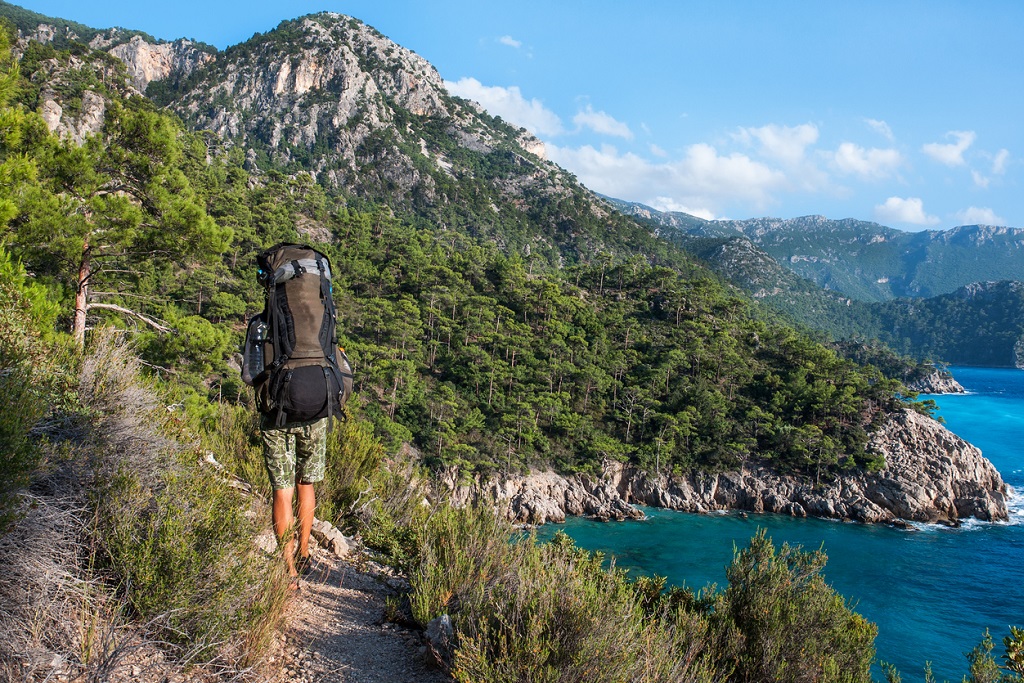
Back when it started in the 1980s, green tourism meant small-scale tourism that comprised visits to natural areas while minimising environmental impact. However, over time it adopted a broader meaning—tourism activity that is environment-friendly in nature. Although green tourism sounds eco-friendly, it is quite the opposite today. Over the years, the term has earned a bad reputation as many hotels and tours have been using it as a marketing tactic, while not actually doing anything to reduce the damage they have been causing the environment, a practice known as greenwashing. This term is a tag that hotels assign themselves to even though they haven’t adopted even the most basic sustainable practices like recycling and water conservation.
According to The International Ecotourism Society (TIES), ecotourism is “responsible travel to natural areas that conserves the environment, sustains the well-being of the local people, and involves interpretation and education.” Ecotourism is all about going out into the natural world as opposed to cities and is more about what you do in a place than where you stay.
Sustainable Tourism, according to the UN World Tourism Organisation (UNWTO), refers “to the environmental, economic and socio-cultural aspects of tourism development. A suitable balance must be established between these three dimensions to guarantee its long-term sustainability.” The concept behind sustainable tourism is to visit a certain place as a tourist and have a positive impact on its community, local economy, and the environment to guarantee sustainability. In simpler words, under sustainable tourism, the focus is on the environmental, financial, and socio-cultural aspects of the area that is being visited.
The main difference between ecotourism, green tourism, and sustainable tourism is that the latter has much wider scope. A key difference between sustainable tourism and ecotourism is that the former includes all kinds of travel from luxurious to even meagre or simple explorations, and covers everything from rainforests to cities.
Also read: A guide to zero waste travel and how to pack for it
What Is The Difference Between Them With Regard To Their Purpose?

Although green tourism has gained a bad rep over the decades, its primary purpose is to generate economic benefit, while minimising harmful effects on the environment. Ecotourism aims at connecting tourists with nature, building environmental and cultural awareness and respect, ensuring that both the tourist and the host have a positive experience, creating direct financial benefits for conservation, between locals and private industries, and minimise physical, social, behavioral, and psychological impacts. UNWTO lists the purpose of sustainable tourism as making optimal use of environmental resources that are key to the development of tourism, maintaining essential ecological processes, helping conserve the natural heritage and biodiversity, respecting host communities, and ensuring viable and long-term economic operations that will provide economic benefits to all the stakeholders (benefits that are distributed fairly).
Some Examples of green tourism, sustainable tourism, and ecotourism :
- Some green tourism initiatives are the use of environment-friendly cleaning supplies, room keys made out of sustainable materials, or a water-conservation programme.
- Those who participate in ecotourism usually ensure that the place they are travelling to is protected from external danger, and use locals as guides in order to get an authentic experience of the place. This way, they try to make a positive impact on the place and the locals. Primary attractions for the ecotourism industry are the flora, fauna, and cultural heritage of the specific area.
- Some practices that are typical of sustainable tourism are supporting community conservation projects, recycling and treating wastes, sourcing locally-produced products for restaurants and gift shops, conserving water and energy, hiring staff from the local community, training them, and paying them fair wages.
Businesses that practise sustainable tourism take concrete measures to enhance the well-being of the local communities. They also make positive contributions to the conservation of the area’s natural and cultural heritage. This way, they not only support and develop the area but also cut down their own costs. An additional benefit is that they attract more responsible travellers.
Also read: Can you travel eco-friendly even on a budget?
How To Tell If An Establishment Supports Green Tourism, Ecotourism, Or Sustainable Tourism?

Tourists must take the extra effort to dig deeper and do their research before booking a hotel or purchasing a tour package. Many tourism businesses that want to avoid looking that they indulge in greenwashing will specify what methods they adopt to reduce their environmental impact. They will also use terms like ecotourism and sustainable tourism on their websites while also explaining the various green initiatives they have undertaken. These make it easier for tourists to view the concrete steps these establishments have taken to protect and conserve natural resources, protect wildlife, and contribute towards the welfare of the locals. Additionally, organisations like the Global Sustainable Tourism Council (GSTC) and The Rainforest Alliance grant certifications to establishments that are making a noticeable effort in practicing sustainable tourism or ecotourism.
Leave A Happy Footprint, Not A Carbon Footprint
Living, let alone traveling or touring, responsibly is not an easy task. However, if we want our future generations to be able to enjoy the sights and sounds that we enjoy today, it is our responsibility to support a sustainable and environmentally friendly tourism business. By practicing ecotourism or sustainable tourism, we not only mitigate our impact on the environment, we also help develop local businesses and communities that have, so far, been side-lined by conventional forms of tourism.
Also read: 13 eco-friendly things to take when you travel
LEAVE A REPLY Cancel reply
Save my name, email, and website in this browser for the next time I comment.
Unveiling the wonders of culture and tradition!

Are you ready to embark on a journey filled with adventure, culture, tradition, and exciting attractions? Let your explorer's spirit soar and make unforgettable memories as you explore the beauty of our diverse world.
Sustainable Tourism/Ecotourism
- Reference work entry
- First Online: 01 January 2022
- Cite this reference work entry

- Christopher Burgoyne 6 &
- Kevin Mearns 7
Part of the book series: Encyclopedia of the UN Sustainable Development Goals ((ENUNSDG))
300 Accesses
1 Citations
Definitions
Defined by the Merriam-Webster dictionary as a practice that is capable of being sustained. Relating to natural resources, the term sustainability denotes a method of resource use or harvesting that does not permanently damage or deplete that resource. In another manner of speaking, environmental scientists refer to sustainable practices as meeting the needs of the present without compromising the ability of future generations to meet theirs (World Commission on Environment and Development 1987 ).
The practice of touring to places of interest outside of one’s usual environment. The Merriam-Webster dictionary defines tourism as the practice of traveling for recreation. The World Tourism Organization has defined sustainable tourism as “tourism that takes full account of its current and future economic, social and environmental impacts, addressing the needs of visitors, the industry, the environment and host communities ( http://sdt.unwto.org/content/about-us-5...
This is a preview of subscription content, log in via an institution to check access.
Access this chapter
- Available as PDF
- Read on any device
- Instant download
- Own it forever
- Available as EPUB and PDF
- Durable hardcover edition
- Dispatched in 3 to 5 business days
- Free shipping worldwide - see info
Tax calculation will be finalised at checkout
Purchases are for personal use only
Institutional subscriptions
Agyeiwaah E, McKercher B, Suntikul W (2017) Identifying core indicators of sustainable tourism: a path forward? Tour Manag Perspect 24:26–33
Article Google Scholar
Anderson W (2013) Leakages in the tourism systems: case of Zanzibar. Tour Rev. https://doi.org/10.1108/16605371311310084
Basu P (2017) Is sustainable tourism development possible? Broad issues concerning Australia and Papua New Guinea. In: Tourism and economic development. https://www.taylorfrancis.com/ . Accessed 8 Oct 2018
Blancas F, Lozano-Oyola M, González M, Caballero R (2018) A dynamic sustainable tourism evaluation using multiple benchmarks. J Clean Prod 174: 1190–1203
Bramwell B (2015) Theoretical activity in sustainable tourism research. Ann Tour Res 54:204–218. https://doi.org/10.1016/j.annals.2015.07.005
Bramwell B, Lane B (2012) Towards innovation in sustainable tourism research? J Sustain Tour 20:1–7. https://doi.org/10.1080/09669582.2011.641559
Buckley R (2009) Ecotourism: principles and practices. CABI, Wallingford
Google Scholar
Buckley R (2012) Sustainable tourism: research and reality. Ann Tour Res 39:528–546. https://doi.org/10.1016/j.annals.2012.02.003
Budeanu A, Miller G, Moscardo G, Ooi C (2016) Sustainable tourism, progress, challenges and opportunities: an introduction. J Clean Prod 111 B/16:285–294
Butzmann E, Job H (2017) Developing a typology of sustainable protected area tourism products. J Sustain Tour 25:1736–1755. https://doi.org/10.1080/09669582.2016.1206110
Din KH (2018) Dialogue with the hosts: an educational strategy towards sustainable tourism. In: Tourism in South-East Asia. https://www.taylorfrancis.com/ . Accessed 18 Sept 2019
Enemuo O, Amaechi B (2015) The role of mass media in tourism development in Abia state. J Tour Hosp Sports 2:44–49
Fennell DA (2004) Ecotourism: an introduction. Routledge, London
Book Google Scholar
Fletcher R (2018) Ecotourism. https://www.ingentaconnect.com/content/rout/26bvfp/2018/00000001/00000001/art00110 . Accessed 17 Sept 2019
Gardner B (2007) Producing pastoral power: territory, identity and rule in Tanzanian Maasailand. University of California, Berkley
Ghosh P, Ghosh A (2019) Is ecotourism a panacea? Political ecology perspectives from the Sundarban Biosphere Reserve, India. GeoJournal 84:345–366
Higgins-Desbiolles F (2010) The elusiveness of sustainability in tourism: the culture–ideology of consumerism and its implications. Tour Hosp Res 10:116–129
Higgins-Desbiolles F (2018) Sustainable tourism: sustaining tourism or something more? Tour Manag Perspect 25:157–160. https://doi.org/10.1016/j.tmp.2017.11.017
Holmes AP, Grimwood BSR, King LJ, the Lutsel K’e Dene First Nation (2016) Creating an indigenized visitor code of conduct: the development of Denesoline self-determination for sustainable tourism. J Sustain Tour 24:1177–1193
Honey M (2008) Ecotourism and sustainable development, second edition: who owns paradise? Island Press, Washington, DC
Hsu P (2019) Economic impact of wetland ecotourism: an empirical study of Taiwan’s Cigu Lagoon area. Tour Manag Perspect 29:31–40
Jenkins CL (2015) Tourism policy and planning for developing countries: some critical issues. Tour Recreat Res 40:144–156. https://doi.org/10.1080/02508281.2015.1045363
Johnston A (2006) Is the sacred for sale: tourism and indigenous peoples, 1st edn. Routledge, London
Kahveci G, Ok K, Yylmaz E (2003) Ecotourism and sustainable development of forest and forest villagers in Turkey. Paper Presented at XII World Forestry Congress in Quebec, Canada
Lee TH, Hsieh H-P (2016) Indicators of sustainable tourism: a case study from a Taiwan’s wetland. Ecol Indic 67:779–787. https://doi.org/10.1016/j.ecolind.2016.03.023
Lu J, Nepal SK (2009) Sustainable tourism research: an analysis of papers published in the journal of sustainable tourism. J Sustain Tour 17:5–16. https://doi.org/10.1080/09669580802582480
Mexa A, Coccossis H (2017) Tourism carrying capacity: a theoretical overview. In: The challenge of tourism carrying capacity assessment. https://www.taylorfrancis.com/ . Accessed 11 Aug 2018
Monbiot G (2012) How “sustainability” became “sustained growth.” https://www.monbiot.com/2012/06/22/how-sustainability-became-sustained-growth/ . Accessed 17 Sept 2017
Pan S-Y, Gao M, Kim H et al (2018) Advances and challenges in sustainable tourism toward a green economy. Sci Total Environ 635:452–469
Article CAS Google Scholar
Qian J, Wei J, Law R (2018) Review of critical discourse analysis in tourism studies. Int J Tour Res 20:526–537. https://doi.org/10.1002/jtr.2202
Ruhanen L, Weiler B, Moyle B, McLennan C (2015) Trends and patterns in sustainable tourism research: a 25-year bibliometric analysis. J Sustain Tour 23:517–535. https://doi.org/10.1080/09669582.2014.978790
Ruhanen L, Moyle C, Moyle B (2018) New directions in sustainable tourism research. Tour Rev. https://doi.org/10.1108/TR-12-2017-0196
Schilcher D (2007) Growth versus equity: the continuum of pro-poor tourism and neoliberal governance. Curr Issue Tour. https://doi.org/10.2167/cit304.0
Simon F (1996) Regulating ecotourism: legal frameworks and market guidelines. In: The ecotourism equation: measuring the impacts. Bulletin, vol 99. Yale, New Haven
United Nations Environment Program (2012) Tourism in the green economy: background report. United Nations World Tourism Organization, Madrid
Vivanco L (2002) Ecotourism, paradise lost – a Thai case study. Ecologist 32:28–30
Wall G (2016) Tourism and development: towards sustainable outcomes. In: Cultural tourism and sustainable local development. https://www.taylorfrancis.com/ . Accessed 3 Aug 2019
Weaver D (2014) The sustainable development of tourism. In: The Wiley Blackwell companion to tourism. Wiley, Oxford, pp 524–534
Chapter Google Scholar
Weaver D (2015) Enlightened mass tourism as a ‘third generation’ aspiration for the twenty- first century. In: The practice of sustainable tourism. https://www.taylorfrancis.com/ . Accessed 8 Aug 2019
Weaver DB, Lawton LJ (2007) Twenty years on: the state of contemporary ecotourism research. Tour Manag 28:1168–1179. https://doi.org/10.1016/j.tourman.2007.03.004
Wood ME (2002) Ecotourism: principles, practices and policies for sustainability, 1st edn. United Nations Environment Programme, Paris
World Commission on Environment and Development (1987) Our common future. Oxford University Press, Oxford
Zeppel H (2006) Indigenous ecotourism: sustainable development and management. CABI, Wallingford
Zhang H, Fan DXF, Tse TSM, King B (2017) Creating a scale for assessing socially sustainable tourism AU – Qiu Zhang, Hanqin. J Sustain Tour 25:61–78
Download references
Author information
Authors and affiliations.
Department of Geography, Environmental Management and Energy Studies, University of Johannesburg, Johannesburg, South Africa
Christopher Burgoyne
Department of Environmental Sciences, University of South Africa, Pretoria, South Africa
Kevin Mearns
You can also search for this author in PubMed Google Scholar
Corresponding author
Correspondence to Christopher Burgoyne .
Editor information
Editors and affiliations.
European School of Sustainability Science and Research, Hamburg University of Applied Sciences, Hamburg, Germany
Walter Leal Filho
Center for Neuroscience and Cell Biology, Institute for Interdisciplinary Research, University of Coimbra, Coimbra, Portugal
Anabela Marisa Azul
Faculty of Engineering and Architecture, The University of Passo Fundo, Passo Fundo, Brazil
Luciana Brandli
Istinye University, Istanbul, Turkey
Pinar Gökçin özuyar
University of Chester, Chester, UK
Section Editor information
University of Passo Fundo, Passo Fundo, RS, Brazil
Luciana Londero Brandli
Rights and permissions
Reprints and permissions
Copyright information
© 2020 Springer Nature Switzerland AG
About this entry
Cite this entry.
Burgoyne, C., Mearns, K. (2020). Sustainable Tourism/Ecotourism. In: Leal Filho, W., Azul, A.M., Brandli, L., özuyar, P.G., Wall, T. (eds) Responsible Consumption and Production. Encyclopedia of the UN Sustainable Development Goals. Springer, Cham. https://doi.org/10.1007/978-3-319-95726-5_22
Download citation
DOI : https://doi.org/10.1007/978-3-319-95726-5_22
Published : 16 April 2022
Publisher Name : Springer, Cham
Print ISBN : 978-3-319-95725-8
Online ISBN : 978-3-319-95726-5
eBook Packages : Earth and Environmental Science Reference Module Physical and Materials Science Reference Module Earth and Environmental Sciences
Share this entry
Anyone you share the following link with will be able to read this content:
Sorry, a shareable link is not currently available for this article.
Provided by the Springer Nature SharedIt content-sharing initiative
- Publish with us
Policies and ethics
- Find a journal
- Track your research

Because We Care
Sustainable Tourism, Green Tourism, Ecotourism Explained
Posted on April 7, 2021 by Yonature
4 Comments
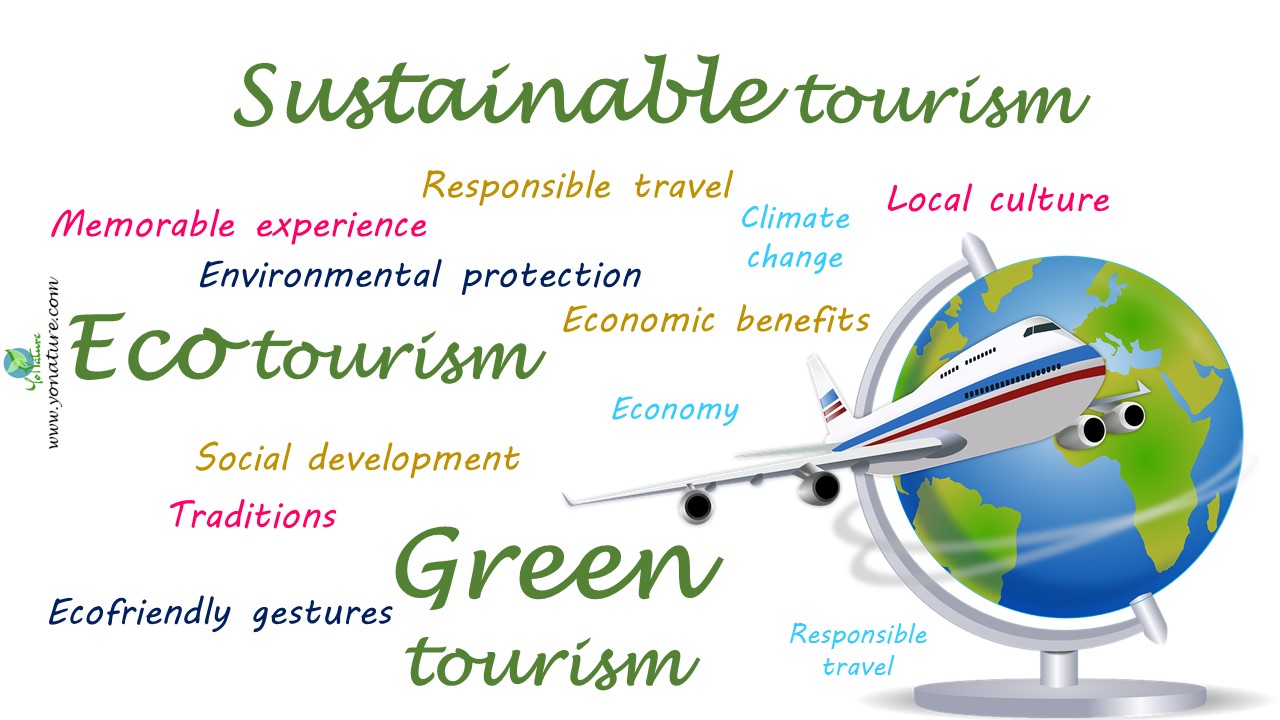
Sustainable tourism is now a new way of practicing tourism .
As it is, tourism plays an important role in the economy of most countries. In the past, mass tourism led to several detrimental impacts on the environment, physically and socio-culturally. But, since the environmental movement in the 1970s/80s, the focus of the tourism sector changed. The well-being of the host community became the priority instead of the tourists.
Over time, people used several terms to define this new type of tourism. Some examples are alternative, endemic, sustainable, eco and green tourism.
And eventually, different organizations defined the different terms in relation to the purpose of the tourism activity.
We will concentrate on the definitions of sustainable tourism, ecotourism and green tourism mainly. Though people use these three terms interchangeably, they actually refer to different things.
Sustainable tourism
History of sustainable tourism.
Since the 1992 Earth Summit in Rio, all economic sectors had to decrease their environmental impact s. They were compelled to be more sustainable. Sustainable here refers to economic vitality, social equity and environmental preservation. The tourism sector, one of the largest global industries, had to comply as well.
In the early days, tourism suppliers basically supported environmental conservation. Many also advocated for the preservation of local culture and traditions. But, generally, researchers, businesses and academicians mostly debated the idea of sustainable tourism. The media also did not give it much attention.
As the years rolled by and the threats of climate change became more visible, sustainable tourism became an obligation.
Definition of sustainable tourism
According to the UNWTO,
Sustainable tourism is tourism that takes full account of its current and future environmental, social and economic impacts. It addresses the needs of visitors, the environment, host communities and the industry.
Basically, sustainable tourism is the integration of the sustainable development principles into the tourism sector. A harmony must exist between the environment, economy and society.
Hence, it is not a sub-sector of tourism per se. Rather, it is an umbrella under which all forms of tourism fall, including eco-tourism.
Sustainable tourism rests on specific development guidelines and management practices. It also includes both mass and niche tourism.
Principles of sustainable tourism
Basically, the principles for sustainable tourism are
- Using environmental resources wisely,
- Respecting and conserving socio-cultural authenticity of host communities
- And providing economic benefits to host communities.
Thus, sustainable tourism is quite complex in nature and requires the efforts of all stakeholders including the government. It is also a continuous process, with adjustments as required.
At the same time, the experience must enrich the tourist significantly. It must raise awareness of environmental issues . And encourage sustainable gestures .
Ways to be sustainable in the tourism sector
So, all stakeholders play an important role in making the tourism sector sustainable. It includes small, local operations to large, international companies. As it is, the sector provides various services like accommodation, transport, attractions and food. Hence, we can implement sustainable practices at different stages and in many activities.
1. Sustainable practices in transportation
i. airlines.
- Maintain a young fleet as far as possible as new technology helps to reduce carbon emissions .
- Also, choose non-stop flights.
- Airlines should encourage high load factor flights because when more people travel, the energy used per passenger decreases.
- And reduce operating weights as the less planes weigh, the less energy they use.
II. Cars
- Generally, promote the use of low-emission cars.
- Or replace old cars with environmentally friendly ones .
- And avoid SUVs as far as possible.
III. Railways and coaches
- Use renewable sources of energy.
- Recycle materials as much as possible.
- Likewise, renew infrastructure to attract more customers and decrease energy use.
- And improve customer service and trips to attract more tourists.
2. Accommodation
- Save energy with better air conditioning/heating systems.
- Generally, use energy-saving lighting systems such as sensors or even control vegetation growth.
- Opt for local foods to reduce transport costs.
- Likewise, invest in renewable energy sources like solar power .
- And recycle waste .
3. Tour operators
- Re-think and re-structure their distant destinations with closer ones.
- They should also develop low-carbon holidays such as train-based trips.
- And offer carbon offsets for flights.
4. Tourists
- Minimize air travel or choose alternative methods.
- Even travel less frequently and stay for longer periods of time.
- Likewise, voluntarily choose to offset flights that they cannot avoid.
- And choose airlines/destinations/services/activities that are eco-friendly.
Eco-tourism
Definition of ecotourism.
According to The International Ecotourism Society,
‘ecotourism is the responsible travel to natural areas that conserves the environment. It also sustains the well-being of local people and involves interpretation and education.’
So, ecotourism is not only engaging in nature-based activities. Rather, it is a way to preserve the natural environment and sustain local communities.
History of ecotourism
Ecotourism first appeared in 1965 when Hetzer coined it with responsible travel. Eventually, other authors used it to refer to eco-development in parks in Latin America and Canada.
During the 1970s/80s’ environmental movement, the term became famous. Mass tourism was heavily degrading the environment and tourists wanted nature-based experiences .
At the same time, people in less developed countries were mutilating their natural resources for agriculture and development. They also realized that they could preserve their natural environment while gaining foreign currency.
Eventually, people used several different terms to promote concepts linked to ecotourism like responsible tourism. Some terms were vague in nature and we no longer use them. Others are basically subdivisions of ecotourism such as wildlife tourism.
Principles of ecotourism
For ecotourism to be successful, proponents must adhere to certain principles. These are:
- Keep environmental, behavioural, social and psychological impacts to a minimum.
- Likewise, respect the culture of host communities and their environment.
- Also, directly finance environmental conservation and host communities.
- Maximize tourist and host satisfaction.
- Build infrastructure that have the minimum impact on the environment.
- And, understand and recognize the spiritual beliefs of indigenous communities and help support them.
Ecotourism in Ecuador as an example
Perhaps one of the most successful ecotourism destination is Ecuador. Historically, it became a famous ecotourism site because of the rare species that inhabit the Galapagos Islands.
Eventually, though, many indigenous groups adopted ecotourism as part of their development strategy.
Today, a wide range of community groups including indigenous people, Afro-Ecuadoreans and mestizos work on diverse ecotourism projects. These range from the majestic Amazon forest to the high sierra and the coast of Ecuador.
Importance of ecotourism in Ecuador
Indeed, Ecuador is one of the most biologically diverse regions on Earth. The Oriente, especially, where the majority of the land belongs to indigenous communities like the Quicha, Achuar, Huaorani and Shuar is very rich.

Ecotourism helped massively in the preservation of natural areas. Otherwise, investors would have destroyed the Amazon forest for oil.
In general, tour operators and NGOs help small communities to make the most of ecotourism based on their own terms. Thus, it allows indigenous people to sell traditional knowledge and use natural resources sustainably.
At the same time, it gives these communities much needed international support when they face tough decisions regarding the exploitation of natural resources. Additionally, it is a form of self-defence for indigenous communities. It helps them preserve their culture, traditional economies and remaining wild places on Earth.
For sure, small rural communities offer memorable experiences to tourists. They share their homes with them and teach them about their local customs and traditions. Or sometimes, they build eco-lodges in their localities with traditional materials and minimum impact on the environment.
Ecotourism activities
In general, ecotourism activities vary greatly from place to place. It typically revolves around the environment and the local customs of the community.
In Ecuador, the main ecotourism activities are
- Visiting the Ecuadorian forests ( mangrove , cloud forest, high mountains etc.)
- Observing the flora and fauna
- Artisanal canoe rides and boat tours
- Forests, cliffs and beaches walks
- Artisanal fishing and octopus catching on rocky beaches
- Preparing and tasting traditional foods and drinks
- Artisanal fabric, jewelry, musical instruments, masks making
- Visits to sacred places, traditional shamans, midwives
Types of ecotourism
There are many subsectors that are related to ecotourism. We define them purely according to the principal attraction or product. They do not necessarily conform to the criteria applied specifically in ecotourism.
So, the main types of ecotourism are principally nature-based, wildlife, adventure, farm and cultural tourism.
Nature-based tourism
As a general rule, nature-based tourism refers to tourism where the natural features of the environment are the centre of attraction. It includes broad trips to visit landscapes or more specialized products like wildlife sightseeing. Camping, stargazing and birdwatching are examples of nature-based tourism.
Wildlife tourism
As for wildlife tourism, it is a large part of nature-based tourism itself. Wildlife tourism products vary greatly from terrestrial to marine tourism. The most common activities are safaris, guided rides, sport hunting, recreational fishing and animal feeding.
Adventure tourism
Adventure tourism refers to commercial tours where the principal attraction is an outdoor activity. This activity typically depends on the natural features of the terrain. It is exciting for the tourist and generally requires specialized sports equipment. Examples include skiing, snowboarding and surfing.
Farm tourism
Farm tourism in fact originates from bed-and-breakfast establishments and ranches. Today, many landholders are investing in it to provide tourists a unique experience of rural life and farming. Some examples are French vineyards, rice paddies in South-east Asia and dairy farms in the Swiss Alps.
Cultural tourism
In cultural tourism, tourists travel to experience different cultures and traditions. The aim is to learn and understand traditional cultures and visit historical sites. It includes folkloric music, art and dance, museums and traditional artefacts. An example is the traditional Kawa hot bath, in the Philippines.
Green tourism
History of green tourism.
The term green tourism emerged in the 1980s referring to small groups of tourists visiting natural areas. They had the minimum impact on the environment. Eventually, people used it interchangeably with ecotourism and sustainable tourism.
Definition of green tourism
The UNWTO defines green tourism as
‘Activities that can we can maintain indefinitely in their environmental, social, economic and cultural contexts.’
Principles of green tourism
Basically, green tourism is a way to promote sustainable tourism.
As it is, the tourism industry will always have impacts given the large number of sectors involved. But, we can decrease these impacts.
Green tourism thus aims to help sectors engage in activities and make choices that have less environmental impacts, benefits society and the economy.
It includes ways to
- Reduce energy use,
- Also, minimize food miles,
- Promote biodiversity,
- And adopt sustainable practices.

Difference between sustainable tourism, ecotourism and green tourism
- Sustainable tourism refers to the incorporation of sustainable practices in the tourism sector.
- Ecotourism is a branch of tourism.
- Green tourism is a catalyst to achieve sustainable tourism.
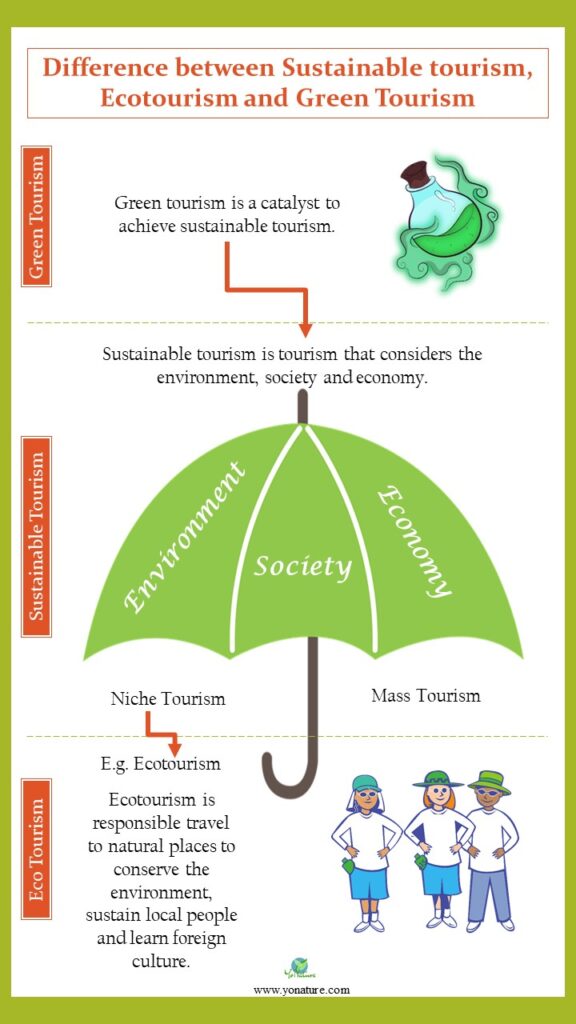
- Buckley, R., 2009. Ecotourism: Principles and practices . CABI.
- Maldonado-Erazo, C.P., del Río-Rama, M.D.L.C., Noboa-Viñan, P. and Álvarez-García, J., 2020. Community-Based Tourism in Ecuador: Community Ventures of the Provincial and Cantonal Networks. Sustainability , 12 (15), p.6256.
- Weaver, D.B. ed., 2001. The encyclopedia of ecotourism. Cabi.
Category: Human activities Tags: characteristics of sustainable tourism , difference between sustainable tourism and green tourism , ecotourism activities , ecotourism example , ecotourism meaning , green tourism examples , green tourism meaning , green tourism practices , how to achieve sustainable tourism , how to be sustainable in tourism sector , importance of green tourism , principles of ecotourism , principles of green tourism , principles of sustainable tourism , Sustainable tourism meaning , types of ecotourism , ways for tourism to be sustainable
4 Comments on “ Sustainable Tourism, Green Tourism, Ecotourism Explained ”
Pingback: Volcanic Eruptions: Positive and Negative Effects - Yo Nature
Pingback: Positive impacts of tourism on the environment - Yo Nature
Pingback: Negative impacts of tourism on the environment - Yo Nature
Pingback: The purpose of ecotourism with examples - Yo Nature
Leave a Reply Cancel reply
Your email address will not be published. Required fields are marked *
Save my name, email, and website in this browser for the next time I comment.
Get News by Email!
- Environment
- Human activities
- Uncategorized
contact[at]yonature[dot]com
Recent Posts
- The Hidden Threat: Tree Diseases – Causes, Types, and Ways of Dealing with Them
- Positive and Negative Impacts of COVID-19
- Volcanic Eruptions: Positive and Negative Effects
- Volcanic Eruptions Explained: Types and Examples
- Effects of Droughts: Positive, Negative, Examples
- Privacy Policy
- Terms and Conditions
Secure Site
Copyright © 2024 · All Rights Reserved · Yo Nature
Theme: Natural Lite by Organic Themes · RSS Feed

What is nature tourism and why is it so popular?
Disclaimer: Some posts on Tourism Teacher may contain affiliate links. If you appreciate this content, you can show your support by making a purchase through these links or by buying me a coffee . Thank you for your support!
Nature tourism is a fantastic type of tourism and it is on the rise! But what is it and why is it so popular? Read on to learn more…
What is nature tourism?
Why is nature tourism important, what is the difference between nature tourism and ecotourism, types of nature tourism, bird watching, scuba diving, scenic driving, bush walking, visiting parks, fishing , cycling , nature tours, nature tourism- further reading.

Nature tourism is all about visiting natural areas and is closed aligned with the concept of rural tourism . Places that nature tourists might visit include might include beaches, forests or national parks. Activities focus on the natural environment rather than visiting man-mad features; think stargazing and hiking, for example. There are locations right across the globe which are perfect for nature tourism.
The CBI (Centre for the Promotion of Imports from Developing Countries) in the Netherlands define nature tourism as follows:
Nature tourism, also called nature-based tourism, is tourism based on the natural attractions of an area. It consists of responsible travel to experience natural areas and their landscape, flora and fauna, protecting the environment and improving the quality of life of locals.
Nature tourism is important as it allows people to see and appreciate the beauty of our natural environment. Through this kind of tourism, we are able to escape the pollution and pressures of city life – it is good for our physical and mental wellbeing to be out in nature, breathing in fresh air and seeing lush greenery or sparkly blue seas. Nature tourism also encourages visitors to take an interest in the natural environment, which may then translate to them making a more conscious effort where environmental issues are concerned. With climate change being an ever-present and ongoing issue, this is definitely a good thing.
Following on from this, nature tourism gives land owners, local communities and local governments more reason to preserve and take care of natural areas. If they know people will come to visit, it is in their best interest to look after these places and is a great incentive for developing their sustainable tourism provision. Visiting tourists can do wonders for local community pride this way.
As with all tourism, nature tourism brings in money . This economic boost trickles down through a whole community; people need places to stay, and food to eat, and they want to buy souvenirs. Hikers may need to buy replacement walking boots, and weary explorers will always need somewhere to rest their heads at night. Jobs are created and economies are boosted through natural tourism, in the surrounding areas of the specific locations too.
Is nature tourism different from ecotourism? Put simply, yes. They are very similar, but ecotourism is perhaps a more specialised branch of nature tourism if we were looking to clearly define the difference in some way. Nature tourism is about visiting an area – responsibly, yes – rather than actively aiming to learn about the environment and participating in its protection. A nature tourist might visit a beach and admire its beauty, while an ecotourist might join in with a beach clean-up. The lines are blurred, of course, as they so often are when we try to differentiate between types of tourism .

There are different types of nature tourism. This is where we will see similarities with another kind of tourism: adventure tourism. You can read all about adventure tourism here if you’re interested! However, the similarity is that both can be split into two ‘types’: hard and soft.
Soft nature tourism might involve bird watching, visiting a beach to sunbathe, gentle walks through country parks and so on. Hard nature tourism is a bit more tough going: mountain climbing, bush walking and scuba diving, for example. Below I’ll go into some of these specific examples, so you can see how diverse nature tourism is!
Nature tourism examples
There are many examples of nature tourism to be found. Keep reading to see what they are, and whether they fall into the hard or soft category.
Bird watching is an example of soft nature tourism. People of all ages and abilities can do this, with or without a guide. You just need some background knowledge of bird species (or a book explaining them) and perhaps some binoculars. the Gambia is a hotspot for bird watching!
This is more of an example of hard nature tourism. It’s much more adventurous, and requires specialist equipment and a guide or a lot of training/experience. Head under the water to see what kind of nature is on display down there: coral, fish, shells and so much more. It’s subjective, but Barracuda Point in Malaysia is apparently the most beautiful place in the world to scuba dive… and I am a big fan of diving in Dahab , Egypt too!
This is another ‘soft’ activity in that it is low-risk and doesn’t require physical exertion. The North Coast 500 in Scotland is an example of a famous scenic drive – this is a great way to experience nature. From rolling hills to winding rivers, there is so much to see out of the window from the comfort of your car. Another fantastic example is the Kings Highway in Jordan , where you will see endless desert, canyons and incredible rock formations.
Camping is, again, an example of soft nature tourism. While it’s a little more ‘involved’ than scenic driving, for example, it is still relatively low risk and most of us are able to participate. Mount Cook National Park in New Zealand is said to be one of the most beautiful places in the world to camp, with its green landscapes and snowy mountain scenery. Climbing Mount Kilimanjaro gives you some fantastic camping opportunities too- just make sure you buy the best wild camping tent !

While controversial, hunting tourism is an example of nature tourism as it takes place in natural spaces. It is definitely one for the hard category, as you need special equipment to do so and it can obviously be quite dangerous if you don’t know what you’re doing. It is also often a discussion point for ethical tourism .
For the most part, this is a very safe activity and therefore falls into the soft category again. Guided tours are available in all of the very best stargazing locations, such as El Teide National Park in Tenerife, and it has even spawned its own branch of tourism. This is known as dark sky tourism, and there are many examples of activities that fall within this. They include stargazing, of course, alongside seeing the Northern Lights, watching an eclipse, astronomy tours and staying in accommodations that offer a clear view of the night sky such as glass domes.

This can be dangerous in that it is all about going off the beaten track, and walking through bushes/on rough ground. Therefore we can categorise this as hard nature tourism; it is something you would do when hiking, and gives you a bit of an adrenaline kick!
One of the easiest and most common forms of nature tourism is simply visiting a park. Whether this is a UK national park or your local green space at home, visiting a park is a definite example of this type of tourism. You’ll see birds, insects, flowers, trees, grass and more. Have a leisurely stroll, cycle through or sit and eat a picnic surrounded by nature.
Fishing falls in the middle of the soft and hard categories. You do need specialist equipment, but with most types of fishing there is little to no risk to life involved. But you need to be in nature – by or even on a lake or river – to do it, so it definitely counts as a form of nature tourism. People have obviously been fishing for years as a source of food gathering, but it is also a recreational hobby enjoyed by many.
This is another middle of the road activity. Kayaking can be dangerous, although it usually isn’t – you’ll often have a guide with you, and of course specialist equipment (the kayak) is required. It’s a really fun activity that many people enjoy!
You can visit a beach and simply do… nothing! This is still an example of nature tourism, as beaches are natural environments. Bali has some of the most beautiful beaches in the world, and tourists flock there to relax and soak up the sunshine. Beaches are also usually near to bars and restaurants, and you might find people doing beach yoga or watching the sunrise/sunset. Thailand even has all-night moonlight beach parties. They are versatile and beautiful locations!

Again, another activity that could be considered hard or soft. It depends where you go, really. A gentle bike ride along a specific cycle lane through a park is nothing like mountain biking in harsh terrains. It’s all about the level of ability you have and what risks you’re willing to take. But cycling is definitely a great way to get out and about in nature. It is also a low-cost and eco-friendly activity, which makes it a winner from many angles.
These tend to be a longer duration than many activities mentioned above, which you may do regularly but for a few hours at a time. Nature tours are days or even weeks-long trips, out into the wilderness with nature and wildlife experts. You might travel by air or train, or go on a cruise, and your guide will be on hand to point out every aspect of nature there is to see. These nature tours will take visitors to some of the most beautiful destinations on earth, such as trekking in Chiang Mai , Croatia, seeing the glaciers in Iceland and Alaska, and gazing at the best waterfalls in Finger Lakes . They’ll set you back a fair bit, but the memories you’ll make seeing bears and waterfalls and glorious sunsets will more than make up for it!
If you enjoyed this article, I am sure that you will love these too!
- Homestay tourism: What is a homestay?
- Cultural tourism explained: What, why and where
- Volunteer tourism: The reasons why people volunteer
- What is adventure tourism and why is it so big?
- Rural tourism explained: What, where and why
Liked this article? Click to share!
Definitions of Ecotourism, Nature Tourism, Sustainable Tourism, Responsible Tourism
What is the difference between ecotourism and responsible tourism? Is sustainable tourism interchangeable with responsible tourism? Often the term green travel is used loosely. Mallika Naguran of Gaia Discovery looks up the various tourism terms and definitions being floated and lists them here.
Singapore, 4 April 2017. 'Green travel' has been used very often but it is too generic a term and should be avoided at all cost. If you are describing some form of sustainability in travel, then try to be specific. There are differences in definition, principles and scope when it comes to terms such as ‘sustainable tourism’, ‘responsible tourism’, ‘nature tourism’, ‘ecotourism’ and more. Here are some definitions being offered by the tourism industry along with principles where applicable. Where there are multiple definitions, my preferred verion is marked by an asterisk. What do you think and do you have a definition to offer? Leave a comment below if you do.
Adventure tourism : Tourism that usually (but certainly not always) takes place in wilderness environments. Often, the natural environment is a venue or backdrop for adventure activities and the focus is on the activities rather than the environment. (Source: ACS Distance Education )
Ecotourism : Responsible travel to natural areas that conserves the environment, sustains the well-being of the local people, and involves interpretation and education.(Source: The International Ecotourism Society )
Ecotourism : Responsible travel to natural areas that conserves the environment, socially and economically sustains the well-being of the local people, and creates knowledge and understanding through interpretation and education of all involved. (Source: Global Ecotourism Network )*
Ecotourism refers to forms of tourism which have the following characteristics:
All nature-based forms of tourism in which the main motivation of the tourists is the observation and appreciation of nature as well as the traditional cultures prevailing in natural areas.
It contains educational and interpretation features.
It is generally, but not exclusively organised by specialised tour operators for small groups. Service provider partners at the destinations tend to be small, locally owned businesses.
It minimises negative impacts upon the natural and socio-cultural environment.
It supports the maintenance of natural areas which are used as ecotourism attractions by:
Generating economic benefits for host communities, organisations and authorities managing natural areas with conservation purposes;
Providing alternative employment and income opportunities for local communities;
Increasing awareness towards the conservation of natural and cultural assets, both among locals and tourists.
(Source: United Nations World Tourism Organisation or UNWTO )
Eco-tourism : Tourism that has minimal impact on fragile natural environments and which focuses on providing nature-based experiences. (Source: ACS Distance Education )
Ethical Tourism : Tourism in a destination where ethical issues are the key driver, e.g. social injustice, human rights, animal welfare, or the environment. (Source: Institute for Tourism)
Environmental tourism : Tourism that takes place in natural settings with an emphasis on understanding and conserving natural environments. (Source: ACS Distance Education )
Geotourism : Tourism that sustains or enhances the geographical character of a place – its environment, heritage, aesthetics, culture and well-being of its residents. (Source: National Geographic)
Nature Tourism : Responsible travel to natural areas, which conserves the environment and improves the welfare of local people. (Source: Texas Parks & Wildlife )
Nature-based tourism : A broad term that covers all tourism experiences centered on wild or natural environments. (Source: ACS Distance Education )
Nature-based tourism includes all forms of tourism where relatively undisturbed natural environments form the primary attraction or setting (Buckley 2009; Newsome et al. 2002). It can include consumptive and adventurous as well as non-consumptive contemplative activities, which in turn can include ecotourism (Buckley, 2009; Fennell 2003; Weaver 2008) and conservation tourism (Buckley, 2010b). (Souce: Ralph Buckley in Nature-based Tourism in Breadth and Depth from " Critical Debates in Tourism ").
Pro-poor Tourism : Tourism that results is in increased net benefit for the poor people in a destination.(Source: Pro-Poor Tourism)
Responsible Tourism : Tourism that maximizes the benefits to local communities, minimizes negative social or environmental impacts, and helps local people conserve fragile cultures and habitats or species. (Source: City of Cape Town. Cape Town Declaration [2002])
Sustainable Tourism : Tourism that leads to the management of all resources in such a way that economic, social, and aesthetic needs can be fulfilled while maintaining cultural integrity, essential ecological processes, biological diversity, and life support systems. (Source: United Nations Sustainable Development Knowledge Platform)*
Sustainable Tourism : Tourism that takes full account of its current and future economic, social and environmental impacts, addressing the needs of visitors, the industry, the environment and host communities.(Source: UNWTO )
Wildlife tourism : Tourism that provides close contact with wildlife and nature in general. (Source: ACS Distance Education )
Principles of Ecotourism
Ecotourism is about uniting conservation, communities, and sustainable travel . This means that those who implement, participate in and market ecotourism activities should adopt the following ecotourism principles:
Minimize physical, social, behavioral, and psychological impacts.
Build environmental and cultural awareness and respect.
Provide positive experiences for both visitors and hosts.
Provide direct financial benefits for conservation.
Generate financial benefits for both local people and private industry.
Deliver memorable interpretative experiences to visitors that help raise sensitivity to host countries' political, environmental, and social climates.
Design, construct and operate low-impact facilities.
Recognize the rights and spiritual beliefs of the Indigenous People in your community and work in partnership with them to create empowerment.
(Source: The International Ecotourism Society )
Conceptual definition of Sustainable Tourism by UNWTO
Sustainable tourism development guidelines and management practices are applicable to all forms of tourism in all types of destinations, including mass tourism and the various niche tourism segments. Sustainability principles refer to the environmental, economic, and socio-cultural aspects of tourism development, and a suitable balance must be established between these three dimensions to guarantee its long-term sustainability.
Thus, sustainable tourism should: 1) Make optimal use of environmental resources that constitute a key element in tourism development, maintaining essential ecological processes and helping to conserve natural heritage and biodiversity.
2) Respect the socio-cultural authenticity of host communities, conserve their built and living cultural heritage and traditional values, and contribute to inter-cultural understanding and tolerance.
3) Ensure viable, long-term economic operations, providing socio-economic benefits to all stakeholders that are fairly distributed, including stable employment and income-earning opportunities and social services to host communities, and contributing to poverty alleviation.
Sustainable tourism development requires the informed participation of all relevant stakeholders, as well as strong political leadership to ensure wide participation and consensus building. Achieving sustainable tourism is a continuous process and it requires constant monitoring of impacts, introducing the necessary preventive and/or corrective measures whenever necessary.
Sustainable tourism should also maintain a high level of tourist satisfaction and ensure a meaningful experience to the tourists, raising their awareness about sustainability issues and promoting sustainable tourism practices amongst them. (Source: UNWTO )
Editor's Note
The definitions provided by ACS Distance Education are not backed by any authoritative source.
*Gaia Discovery's preferred definition
References:
The Case for Responsible Travel – Trends & Statistics 2016 . Center for Responsible Travel
Making Tourism More Sustainable - A Guide for Policy Makers , UNEP and UNWTO, 2005, p.11-12
Get Free Email Updates

- GSTC Mission & Impacts
- GSTC History
- Market Access Program
- GSTC Board of Directors
- Assurance Panel
- Working Groups
- GSTC Sponsors
- GSTC Members
- Recruitment
- Contact GSTC
- GSTC For the Press
- Criteria Development, Feedback & Revisions
- Sustainable Tourism Glossary
- SDGs and GSTC Criteria
- GSTC Industry Criteria
- GSTC Destination Criteria
- GSTC MICE Criteria
- Criteria Translations
- GSTC-Recognized Standards for Hotels
- GSTC-Recognized Standards for Tour Operators
- GSTC-Recognized Standards for Destinations
- Recognition of Standards (for Standard Owners)
- GSTC-Committed
- Certification for Hotels
- Certification for Tour Operator
- Certification for Destination
- Accreditation for Certification Bodies
- Accredited Certification Bodies
- Stakeholder Consultations
- What is Certification? Accreditation? Recognition?
- Sustainable Tourism Training Program (STTP)
- Upcoming Courses
- Professional Certificate in Sustainable Tourism
- Professional Certificate in Sustainable Business Travel
- GSTC Trainers and Partners
- FAQs: GSTC Training Program
- Organization Membership Application
- Destination Membership Application
- Membership Policy
- Membership Categories & Fees
- Membership Payment Options
- Webinars for GSTC Members
- Members Log In
- Upcoming Webinars
- GSTC2024 Sweden, Apr 23-26
- GSTC2024 Singapore, Nov 13-16
- Past Conferences
- Destination Stewardship Report
GSTC Criteria
The global sustainability standards in travel and tourism, the difference between ecotourism and sustainable tourism, many confuse between the terms “ecotourism”, “sustainable tourism”, and “responsible travel”, so here’s a simple explanation on the differences..
Ecotourism is a niche segment of tourism in natural areas. Sustainable Tourism does not refer to a specific type of tourism, it is an aspiration for the impacts of all forms of tourism. All forms of tourism should be sustainable. The GSTC Criteria serve as the global standards for sustainability in travel and tourism. Responsible Travel is a term referring to the behavior and style of individual travelers.
What is Ecotourism? Ecotourism Definitions
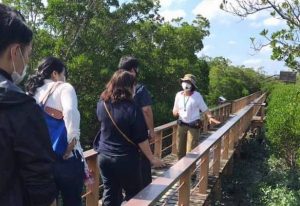
According to Fennell, “Ecotourism is a sustainable form of natural resource-based tourism that focuses primarily on experiencing and learning about nature, and which is ethically managed to be low-impact, non-consumptive, and locally-oriented (control, benefits, and scale). It typically occurs in natural areas, and should contribute to the conservation or preservation of such areas” (Fennell, 1999: 43. Ecotourism: An Introduction ).
The Mohonk Agreement (2000), a proposal for international certification of Sustainable Tourism and Ecotourism, saw ecotourism as “sustainable tourism with a natural area focus, which benefits the environment and communities visited, and fosters environmental and cultural understanding, appreciation, and awareness.”
According to the UNWTO’s definition , “ecotourism refers to forms of tourism which have the following characteristics: (1) All nature-based forms of tourism in which the main motivation of the tourists is the observation and appreciation of nature as well as the traditional cultures prevailing in natural areas; (2) It contains educational and interpretation features; (3) It is generally, but not exclusively organised by specialised tour operators for small groups. Service provider partners at the destinations tend to be small, locally owned businesses; (4) It minimises negative impacts upon the natural and socio-cultural environment; (5) It supports the maintenance of natural areas which are used as ecotourism attractions by: Generating economic benefits for host communities, organisations and authorities managing natural areas with conservation purposes; Providing alternative employment and income opportunities for local communities; Increasing awareness towards the conservation of natural and cultural assets, both among locals and tourists.” These characteristics are sometimes referred to as principles of ecotourism.
The ecotourism definition by the Global Ecotourism Network (GEN): “Ecotourism is responsible travel to natural areas that conserves the environment, sustains the well-being of the local people, and creates knowledge and understanding through interpretation and education of all involved (visitors, staff and the visited)” ( Global Ecotourism Network, 2016 ).
There are similar definitions along these lines by other organizations (such as Ecotourism Australia ).
What is Sustainable Tourism? Sustainable Tourism Definition

Sustainable tourism is “Tourism that takes full account of its current and future economic, social and environmental impacts, addressing the needs of visitors, the industry, the environment and host communities.” “Sustainability principles refer to the environmental, economic, and socio-cultural aspects of tourism development, and a suitable balance must be established between these three dimensions to guarantee its long-term sustainability” (UNEP & UNWTO, 2005: 11-12. Making Tourism More Sustainable – A Guide for Policy Makers ).
The GSTC Criteria serve as the global baseline standards for sustainability in travel and tourism. The Criteria are used for education and awareness-raising, policy-making for businesses and government agencies and other organization types, measurement and evaluation, and as a basis for certification.
They are the result of a worldwide effort to develop a common language about sustainability in tourism. They are arranged in four pillars: (1) Sustainable management; (2) Socioeconomic impacts; (3) Cultural impacts; (4) Environmental impacts (including consumption of resources, reducing pollution, and conserving biodiversity and landscapes).
The GSTC Criteria have been built on decades of prior work and experience around the world, and they take into account the numerous guidelines and standards for sustainable tourism from every continent. During the process of development, they were widely consulted throughout the globe, in both developed and developing countries, in several languages. They reflect our goal in attaining a global consensus on sustainable tourism. The process of developing the Criteria was designed to adhere to the standards-setting code of the ISEAL Alliance, the international body providing guidance for the development and management of sustainability standards for all sectors. That code is informed by relevant ISO standards.
The Criteria are the minimum, not the maximum, which businesses, governments, and destinations should achieve to approach social, environmental, cultural, and economic sustainability. Since tourism destinations each have their own culture, environment, customs, and laws, the Criteria are designed to be adapted to local conditions and supplemented by additional criteria for the specific location and activity.
Are you a tourism professional? GSTC offers regular courses for professionals about sustainable tourism and the GSTC Criteria , sustainable business travel , and sustainable hotels .
What is Responsible Travel? Responsible Tourism Definition

Tourists and travelers can also influence businesses to follow sustainability practices and offer more sustainable products and services.
As a traveler, you can learn more about how to be a responsible traveler by visiting this page: GSTC for Travelers .
Want to Learn More?
The GSTC website is full of resources. Make sure you visit the relevant pages for you. Also, videos are available on the GSTC YouTube channel .
GSTC offers regular courses about sustainable tourism and the GSTC Criteria , as well as sustainable business travel , and sustainable hotels .
Share This Story, Choose Your Platform!
Related posts.
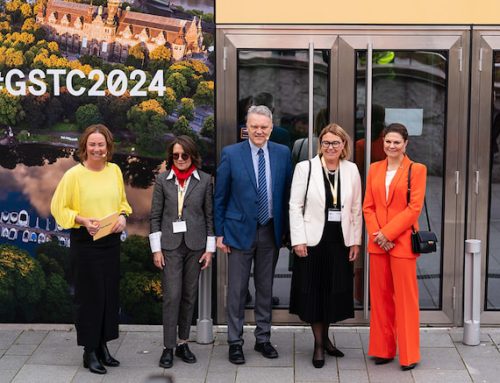
The Largest GSTC Global Conference Took Place in Stockholm With the Presence of Her Royal Highness of Sweden, Crown Princess Victoria
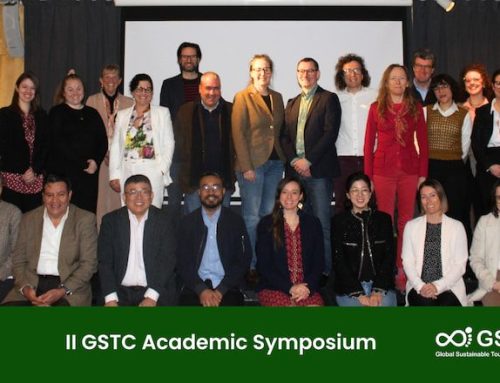
II GSTC Academic Symposium concluded successfully
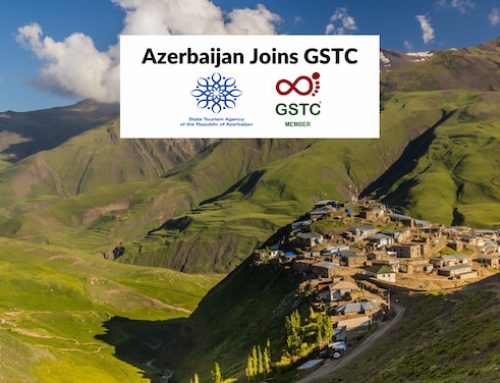
Azerbaijan joins and signs MOU with GSTC
Tourism Types – What’s The Difference
Posted on January 12, 2012 | Last Updated on April 7, 2022
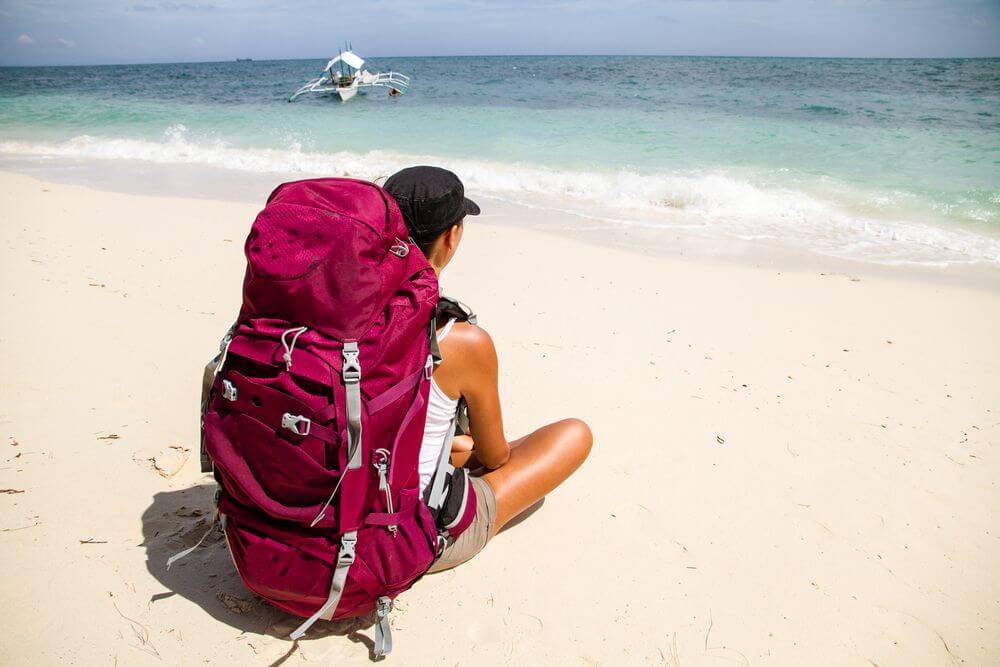
How do you define Ecotourism?
Ecotourism is defined as responsible travel to natural areas that conserve the environment and sustains the well-being of the local people.
In shorter terms, it means that people travelling act responsibly in order to minimize their impact on the environment.
Benefits of Ecotourism
- Environment protection awareness.
- Travellers are often considered as eco-friendly and different.
- It can generate income opportunities for local people.
- It’s easier to access remote ecotourism locations due to cheap flights.
Aim of Ecotourism
It is about minimizing physical, social behavioural and psychological impacts.
It’s about building a culture of environmental respect and protection that provides a positive experience.
Negatives of Ecotourism
- Tourists often go to environmentally fragile areas that may risk collapse
- Wildlife can be disturbed – removal of vegetation due to ecotourism.
- Some visits are done during periods of hatching or breeding. There is a risk associated with ecotourism that it could turn into mass tourism that has a huge impact on the environment.
How effective is Ecotourism?
Approximately 84% of funding from national parks around the world is brought in through ecotourism.
How does Ecotourism affect the environment?
Ecotourism is often associated with people travelling on holidays.
When going on holidays, travel can be harmful to the environment, especially planes. On a beneficial side, Eco accommodation will use green methods to deal with waste management, water use, energy conservation and other methods.
Read Also: Tourist Types – What’s The Difference
What is Nature Tourism?
Nature tourism is similar to ecotourism in that it is responsible for travel to natural areas that conserves the environment and improves the welfare of local people. It’s tourism based on the natural attractions of an area. For example birdwatching, stargazing, fishing and hiking.
What is the difference between Nature Tourism and Ecotourism?
Nature tourism is all about enjoying undeveloped natural areas of wildlife.
Ecotourism is defined as responsible travel to natural areas that conserve the environment and improves the welfare of local people.
What is the meaning of sustainable tourism?
Sustainable Tourism takes full account of its current and future economic, environmental and social impacts. It addressed the needs of communities, the environment and the visitors.

What is an example of sustainable tourism?
Examples of sustainable tourism include wind energy, solar energy and crop rotation.
What are the benefits of sustainable tourism?
It tends to improve the quality of work and helps generate more local jobs. It allows and provides more opportunities for local people to start their own business in tourist areas.
You May Also Like: How To Plan A Trip Abroad
What does responsible tourism mean?
Responsible tourism is tourism that minimises negative social, economic and environmental impacts and that generates economic benefits for local people.
What are the advantages and disadvantages of tourism?
Tourism boosts the economy as it employs thousands of people.
- Tourism funds infrastructure projects.
- Some tourists after visiting an area come back to buy investment properties or second homes.
- It supports visual arts in the community.
The disadvantages of tourism include:
- Environmental – it can cause damage with risks such as erosion, pollution and loss of natural habitats.
- Seasonal fluctuations – Tourism jobs are seasonal, with no extra benefits along with being low skilled jobs such as bar worker, waiter and others.
- Cultural Clashes – Tourists often lack respect for local traditions and culture.
Do some research about the country you want to visit
Read about the country you are about to visit to know what you are allowed to do and what is banned. Research if the country is suited to the type of tourist’s holiday you want. It’s also important to research the country’s way of life as it may be a lot different to the country you are from.
Apply for a Visa
Do you need a visa to enter the country you wish to travel to? It is important to remember no visa-no entry! You can check if you need a visa for the country you’re travelling to with Visa First and apply for your visa of choice.
We can assist you in securing your visa from start to finish and boost your chances of a successful outcome.
Want to see the world? Apply for the visas you need via visafirst.com .
Eco-tourism is wide and need more elaboration on how it helps to improve domestic tourism in kenya
Leave a Reply Cancel reply
Your email address will not be published. Required fields are marked *
Previous Article
Next Article

Tourist Types – What’s The Difference
Tourism is a complex industry that is made up of different businesses. Tourists travel for leisure and fun and give back to the economy by spending on their travels. There are many different types of tourists and this guide can help you understand them. What is a tourist? A tourist is a person that is […]

Travel Trends for 2012
Cox & Kings are travel experts that plan luxury trips for centuries now (since 1758). They have created the following list with travel trends for the soon coming 2012. Here are some of them: “’ End of the world’ Journeys” – Apparently, it’s become very popular among travellers to go on trips to not so […]

Nature Tourism And Ecotourism
A wildlife safari is characterized by but obviously wildlife and involves these days an eco-friendly and environmentally responsible journey into wildlife sanctuaries, national parks and reserves.
Published on 14th Aug 2023

NATURE TOURISM AND ECOTOURISM
Introduction-
To the naked eye, the terms eco-tourism and nature tourism may seem like synonyms and in fact, a lot of literature shows the evidence of these two terms being used interchangeably but in actuality, there is a stark difference between the two terms.
A short definition of nature tourism-
Nature tourism is responsible for travel to any natural areas, which conserve nature and also improve the welfare of the locals. Basically, it attracts tourists based on natural attractions. They experience the diversity of natural and cultural resources. They enjoy the grandeur of nature, escape from the pressures of urban life, escape from humanity, explore different landscapes, experience outdoor adventures in a natural setting, learn about the environment . But over-tourism in a nature tourism destination also has a negative impact due to the overutilization of natural resources.
A short definition of eco-tourism-
Eco-tourism is responsible for the attraction of responsible travel to natural areas that conserves the environment , sustain the well-being of the local people, and involves interpretation and education. It’s about uniting communities, conservation, and sustainable travel. Follow the principle of minimizing social, physical, behavioral, and psychological impacts. Build cultural and environmental awareness, provide a positive experience to both hosts and visitors, direct financial benefits for conservation, and for local people. As it is also focused on minimal use of natural resources. Here it is also taken into account that there shouldn’t be degradation of the natural environment directly or indirectly.
Basic differences between nature and eco-tourism –
The term, ‘ Nature tourism’ , encompasses all forms of tourism such as adventure tourism, mass tourism, low impact tourism that makes use of the natural resources in wild or undeveloped form. So, a trip to Kaziranga National Park and a white-water river rafting trip in Haridwar will both fall in the category of nature tourism.
In contrast, any form of tourism that satisfies the following principles can be called eco-tourism-
- Building environmental and cultural awareness and respect.
- Minimum impact on the environment and the natural surroundings of the destination.
- Providing direct financial benefits for conservation.
- A positive experience for both the host and the guest.
Eco-tourism is also considered as a subset of natural tourism . Traveling to Chilka Lake to view the rare dolphins or visiting the Sundarbans to get a glimpse of the Great Bengal Tiger would be examples of eco-tourism if the visit satisfied the above-mentioned conditions.
Nature tourism does not take into account nature degradation. As when the number of tourists increases then it impacted nature negatively. As carbon footprints come into account. When there is over-tourism in any nature tourism destination then it acts as a carbon positive. So, to conserve nature by minimizing its utilization we should focus on eco-tourism, which again fascinates nature tourism as well. It again responsible for Sustainable Development Goal because it not only looks after the local community, it also looks after the carbon negative environment by conserving nature and less degradation of natural resources.
A village called Phayeng in Manipur that conserves nature by implementing various strategies under the positive environment model. According to the forest protection rules devised by the villagers, hunting is completely banned in the village except for once a year when a deer is usually killed as a sacrifice to the “forest gods”. Before the project started, villagers were practicing agriculture only in the monsoon months. Now, they work round the year and grow horticulture crops like watermelon, beans, cabbage, broccoli, and others apart from paddy.
Here in SSEK, we provide both Nature as well as eco-tourism and we invite both nature and eco-tourism . As our primary focus is to conserve nature and look after the benefits of the local community to achieve SDG . As our primary focus is to conserve nature because we believe it’s time to giving back to nature. Also, we look into the benefits of the local but by minimal use of nature by any local people or any tourist. We reuse many wastage things few are like the reuse of tires, doors & windows. We planted many new trees; it will invite different beautiful birds and animals. We believe in the lesser release of carbon to the environment . So, we focus more on eco-tourism, which again influences nature tourism .
Continue Reading...

The Indian Fig Tree in Surwahi Social Ecoestate Kanha
Read more>

Difference Between Wildlife Sanctuary Vs National Park in India

Surwahi Social Building Structure – Design & Material

SSEK – Collaborative Artisanal Construction Folktale
Your invitation, our gallery.
Embark on a visual journey through our gallery, where every image tells a story of the untouched beauty surrounding Surwahi Social Ecoestate.

Madhya Pradesh Tourism Board approved eco-friendly Homestay / Bed and Breakfast

IMAGES
VIDEO
COMMENTS
In reality, ecotourism refers to the sector of low-impact tourism that includes natural areas, whereas sustainable tourism is a broader term describing sustainable practices within and performed by the tourism industry. The environmental damages that can stem from irresponsible tourism have continued to come to light through complications from ...
While there are common points between ecotourism and sustainable tourism, both have a focus on the environment, nature, and the welfare of local communities. There are distinct differences that set them apart. Ecotourism is more focused on nature conservation, the environment, and the local culture, with the aim of benefiting the local community.
These characteristics shape the unique nature of ecotourism experiences and differentiate them from mainstream tourism activities. 1. Nature-focused: The primary focus of ecotourism is on exploring and experiencing natural environments. Ecotourism destinations are typically characterized by their abundance of biodiversity and unique ecosystems ...
Nature tourism and ecotourism are two terms that are often used interchangeably, but they actually refer to two different ways of experiencing and interacting with the natural world. While both involve travel to natural areas, there are some key differences between the two that are worth exploring. Nature Tourism Nature tourism is a type of ...
It Protects Natural Ecosystems . Ecotourism offers unique travel experiences focusing on nature and education, with an emphasis on sustainability and highlighting threatened or endangered species.
Sustainable tourism, on the other hand, has a broader scope and considers the interconnectedness of environmental, social, and economic aspects of tourism. Principles: Ecotourism emphasizes nature conservation, educational experiences, community involvement, sustainable practices, and responsible tourism.
Nature Tourism vs. Ecotourism. Nature tourism and ecotourism are often used interchangeably, but they have distinct differences. Nature tourism is generally focused on enjoying and observing natural environments, such as national parks, wildlife reserves, and natural landmarks, for leisure and recreation.
Nature-based tourism vs. ecotourism? Many people use nature-based and ecotourism interchangeably, but they are not the same. Nature-based tourism is traveling to a natural landscape to enjoy nature. Ecotourism is visiting a place with the goal of contributing to conservation while benefitting the community for a positive impact. I consider the ...
Ecotourism and Protected areas. According to the UN Tourism's definition, ecotourism refers to forms of tourism which have the following characteristics: All nature-based forms of tourism in which the main motivation of the tourists is the observation and appreciation of nature as well as the traditional cultures prevailing in natural areas.
Like Ecotourism, adventure tourism is an area that is experiencing growth as people's appetite for ever newer and more unique experiences changes. Data for this area is likely to be contained within the larger publications on travel and tourism and may even at times be grouped with ecotourism. ... Covers the areas of: Nature-based Tourism ...
In simpler words, under sustainable tourism, the focus is on the environmental, financial, and socio-cultural aspects of the area that is being visited. The main difference between ecotourism, green tourism, and sustainable tourism is that the latter has much wider scope. A key difference between sustainable tourism and ecotourism is that the ...
In particular, distinction has been made between ecotourism and nature-based tourism, where the former is defined by a set of principles that structure tourism activities so that they benefit the environment and local people and the latter is defined merely by the activities of the tourist (Honey 2008).
Eco-tourism Definition of ecotourism. ... As a general rule, nature-based tourism refers to tourism where the natural features of the environment are the centre of attraction. It includes broad trips to visit landscapes or more specialized products like wildlife sightseeing. Camping, stargazing and birdwatching are examples of nature-based tourism.
Nature tourism is all about visiting natural areas and is closed aligned with the concept of rural tourism. Places that nature tourists might visit include might include beaches, forests or national parks. Activities focus on the natural environment rather than visiting man-mad features; think stargazing and hiking, for example.
Ecotourism refers to forms of tourism which have the following characteristics: All nature-based forms of tourism in which the main motivation of the tourists is the observation and appreciation of nature as well as the traditional cultures prevailing in natural areas. It contains educational and interpretation features.
Ecotourism is a form of nature tourism but it focuses on conservation of species and habitats and supporting local communities. Tourist Attractions. According to David A. Fennell, in the book Ecotourism, a tourist attraction consists of three elements: A person with touristic needs, an idea/characteristic of where they would like to visit, and ...
Ecotourism is a niche segment of tourism in natural areas. The term emerged in the late 1980s, with the raising importance of ecotourism. According to Fennell, "Ecotourism is a sustainable form of natural resource-based tourism that focuses primarily on experiencing and learning about nature, and which is ethically managed to be low-impact, non-consumptive, and locally-oriented (control ...
Nature-based, Culture, Adventure 10 million US travelers in total. Human powered activities as a trend input—increased in 2012, ... • While ecotourism and sustainable tourism are recognized as an important, growing tourism segment, primary research to
Ecotourism is a form of tourism marketed as "responsible" travel (using what proponents say is sustainable transport) to natural areas, conserving the environment, and improving the well-being of the local people. The stated purpose may be to educate the traveler, to provide funds for ecological conservation, to directly benefit the economic development and political empowerment of local ...
Traditional tourism offers air conditioning, room service, and quality bedding. In contrast, ecotourism often offers eco-friendly amenities such as solar-powered showers, composting toilets, and rainwater collection systems. However, it's important to note that the level of comfort and luxury varies greatly between the two types of travel.
What is Nature Tourism? Nature tourism is similar to ecotourism in that it is responsible for travel to natural areas that conserves the environment and improves the welfare of local people. It's tourism based on the natural attractions of an area. For example birdwatching, stargazing, fishing and hiking.
Ecotourism versus Nature-based Tourism: Do Tourists Really Know the Difference? GYAN P. NYAUPANE School of Community Resources & Development, Arizona State University, 411 N. Central Avenue, Phoenix, AZ, 85004, USA E-mail: [email protected].
NATURE TOURISM AND ECOTOURISM. Introduction-To the naked eye, the terms eco-tourism and nature tourism may seem like synonyms and in fact, a lot of literature shows the evidence of these two terms being used interchangeably but in actuality, there is a stark difference between the two terms.. A short definition of nature tourism-Nature tourism is responsible for travel to any natural areas ...